Observations of Landscape from the Air
*Edges-the outside limit of an object, area, or surface; the point immediately before something momentous occurs or someone loses control; an intense, sharp, or striking quality…
Viewing the landscape from the passenger seat of a small plane is a profound experience. There is great beauty and complexity in this patterned landscape; the human geography (altered spaces) interwoven with natural elements (waterways, unbroken prairie and parkland forest). When I first started documenting the landscape from the aerial perspective, I wanted to be a witness to the impact that human activity has on our environment. With this observation there is the realization of how the landscape of Western Canada has radically changed in just the last 100 years. Different approaches to land management and the emergence of the corporate farming complex have accelerated some of these changes. I realized that I was interested in capturing some of the remaining areas of natural landscape and exploring how these areas intersect with our very real need for food production.
In the Spring of 2023, I started a collaborative project with the Nature Conservancy of Canada. I wanted to explore creating artwork inspired by viewing the landscape through a conservation lens, walking the land with their staff and stakeholders. One of the main reasons I approached Nature Conservancy of Canada was their focus not just on land conservation but on a collaborative approach to understanding human interaction with our environment. This led to exploring the NCC Working Landscapes program. This is an outreach program that helps producers manage natural areas while pursuing a livelihood in agricultural production. As I started to visit sites, followed by a series of fly-overs, I found my experience on the ground was changing how I viewed the landscape from above.
The specific body of work entitled ‘Edges’ was inspired by several conversations about shelter belts. It was a discussion that reveals the complexity inherent in trying to make choices about land use from a conservation perspective. On the one hand the shelter belts were created using mainly invasive species. In many areas Caragana were planted to prevent soil erosion during the droughts of the 1930’s. Caragana is incredibly invasive and very difficult to eradicate. It threatens remaining stands of Aspen Forest and pockets of Parkland Habitat. But these hedgerows also provide essential shelter for birds and small mammals. On the South and Central prairies many producers are starting to remove shelter belts, ‘pushing bush’, to make room for the use of more sophisticated equipment and increasingly efficient crop production. This eradication led me to begin looking even more closely at the places where natural habitat and altered agriculture spaces still sit side by side - areas of marshland and stands of Aspen and Poplar trees that linger on the edges of production. Some producers are choosing to leave these areas intact, to protect wildlife, and as an aspect of water management.
As the body of work progressed, I started to fly over more of Central Saskatchewan. In these areas there is confluence of lakes, natural parkland habitat and landscape modified for planting. These are part of the ‘edges’, places where key decisions are still being made about land use. I hope this body of work inspires viewers to consider our impact on the landscape and to engage in some of the amazing work being done by people involved in land stewardship in Western Canada.

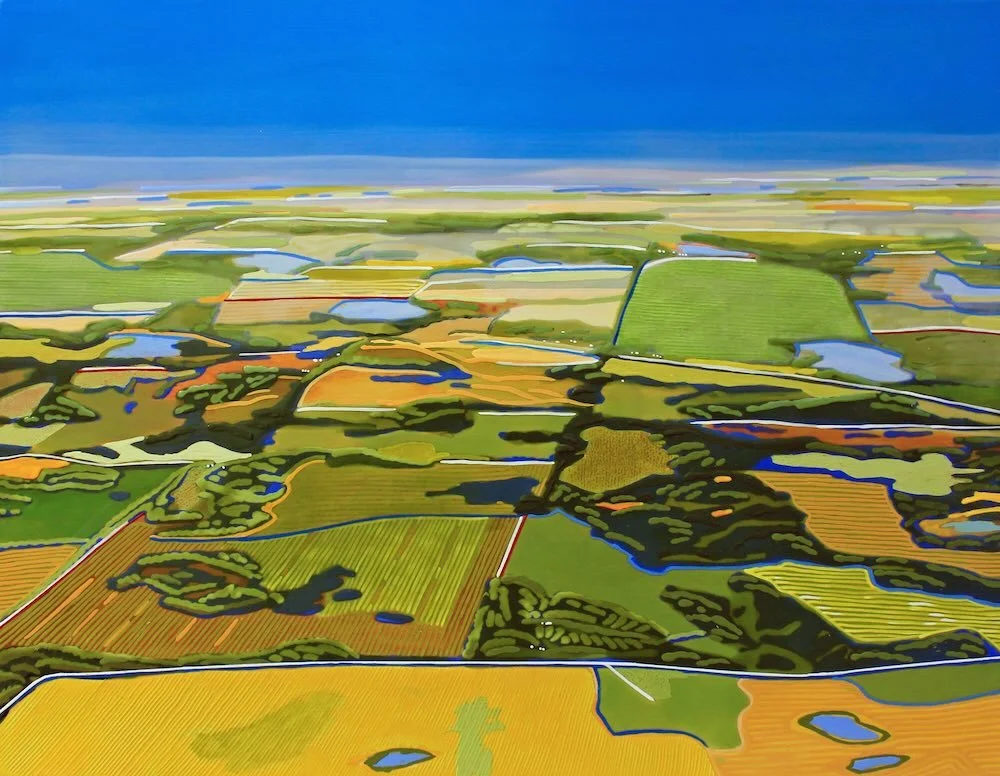

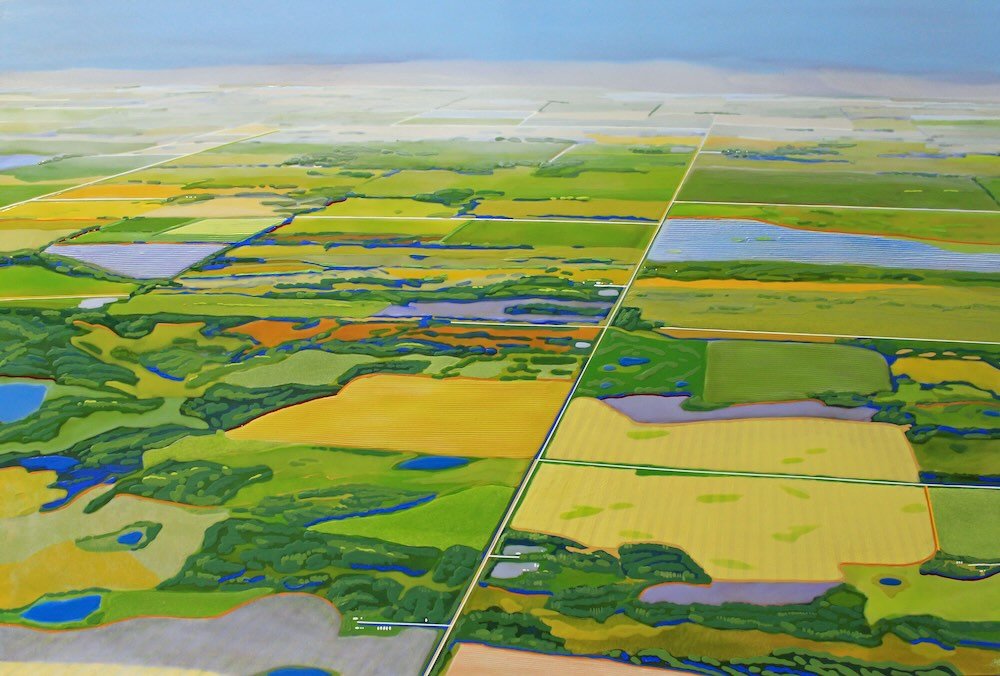
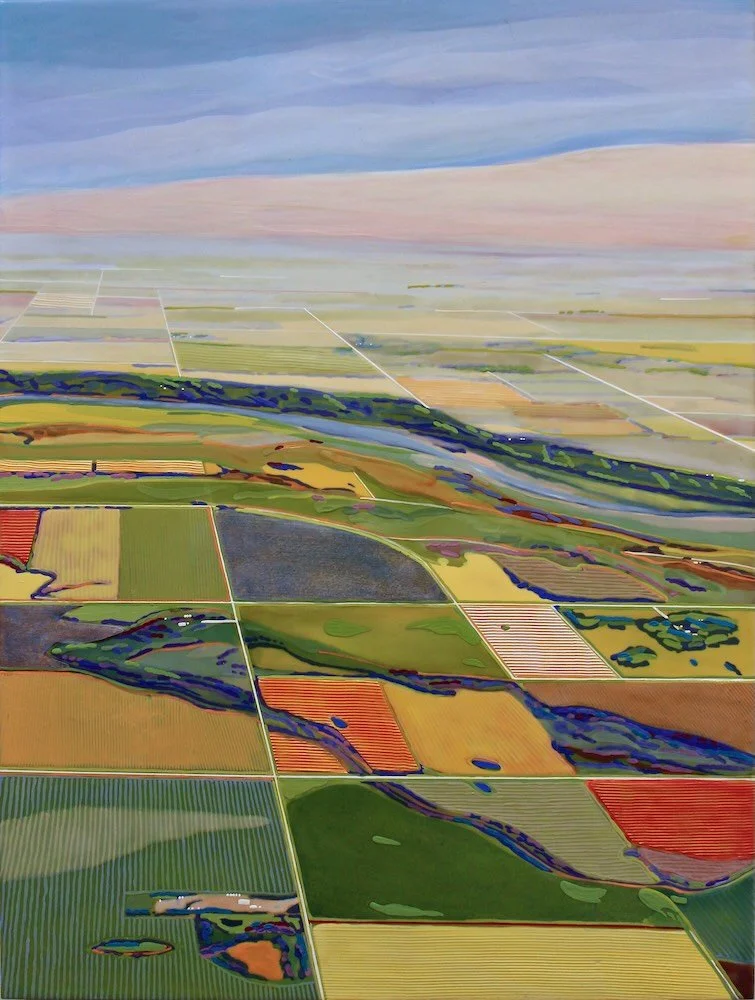
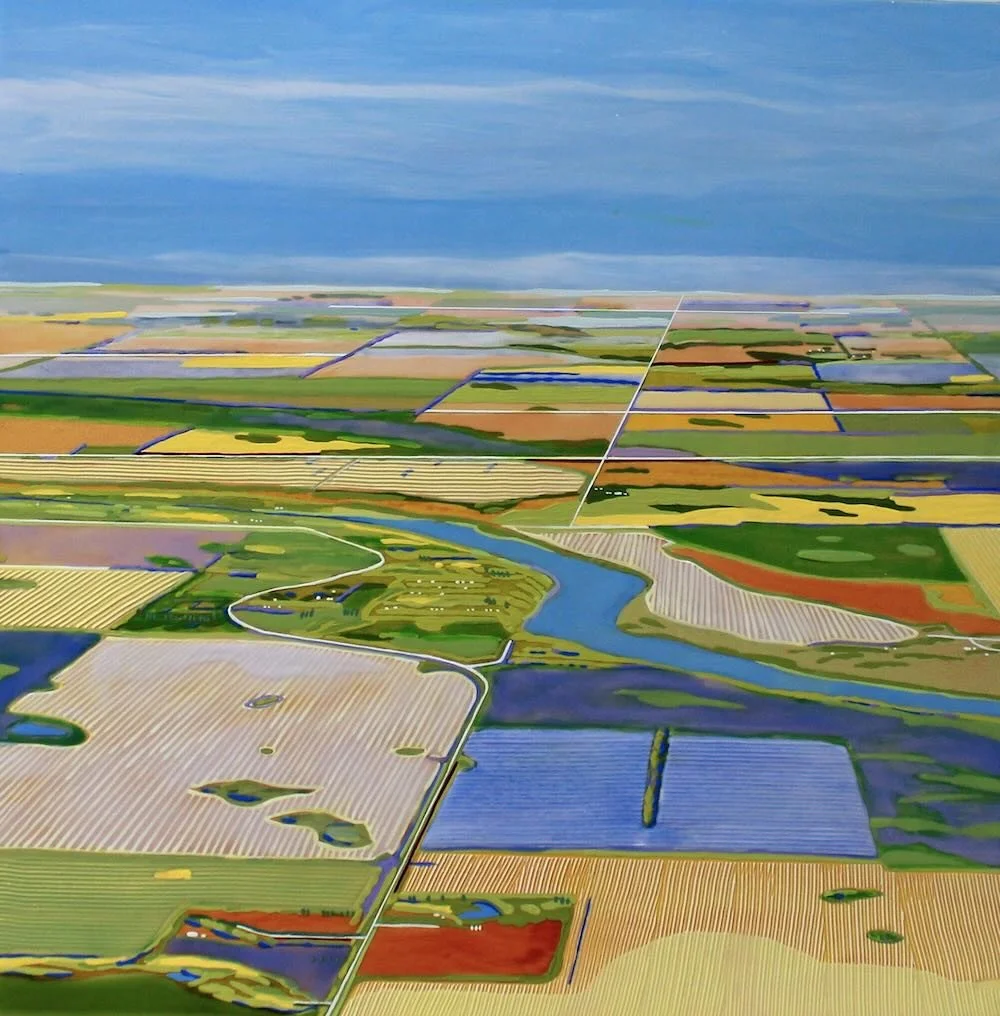



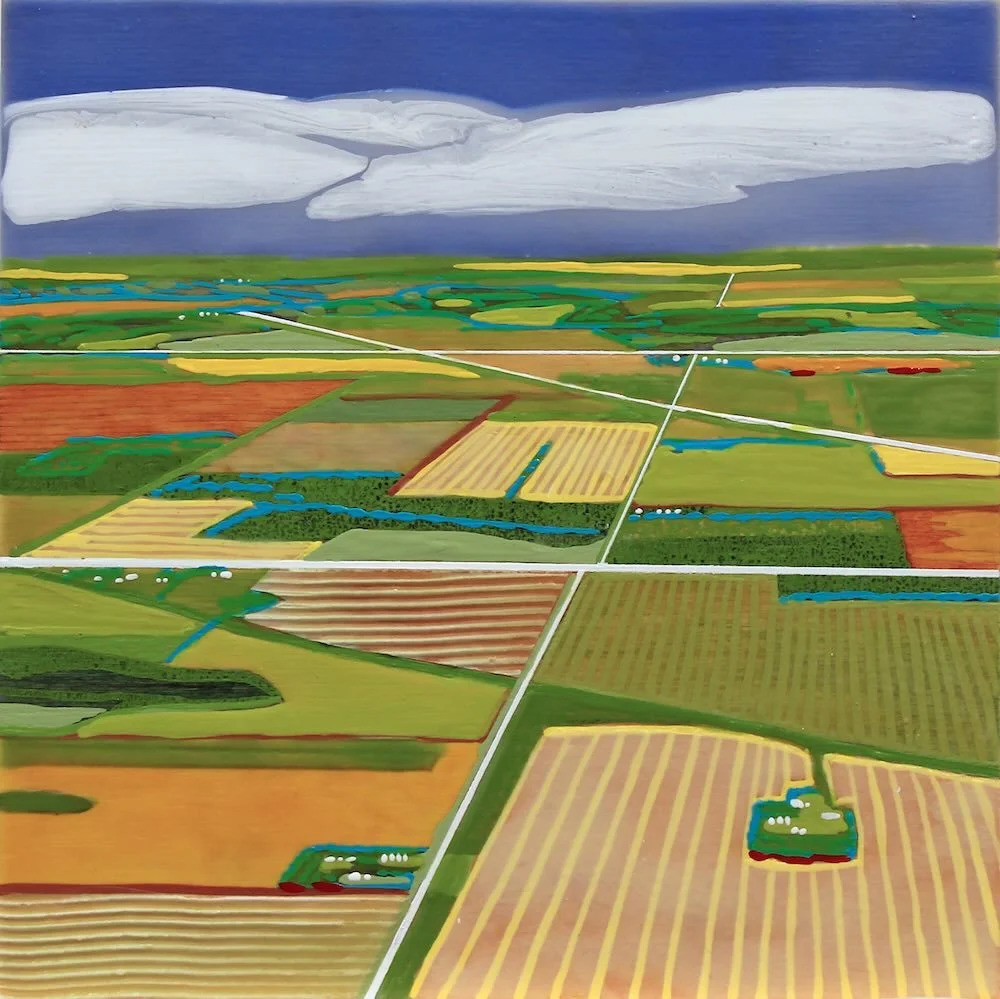

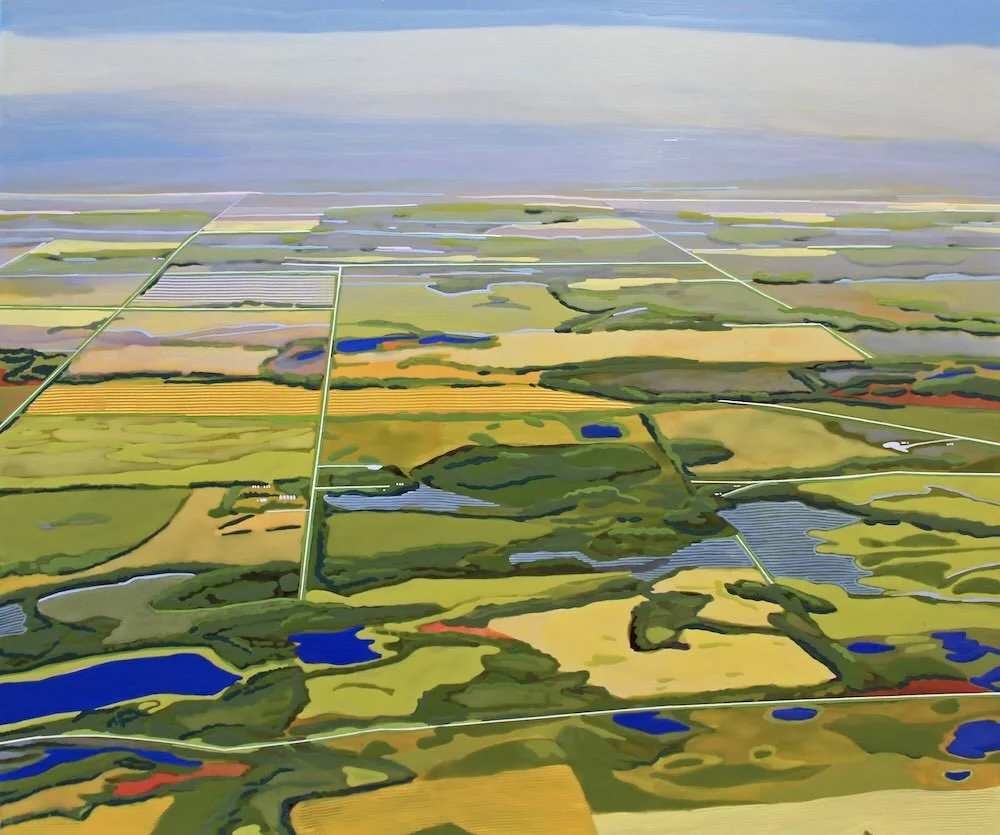
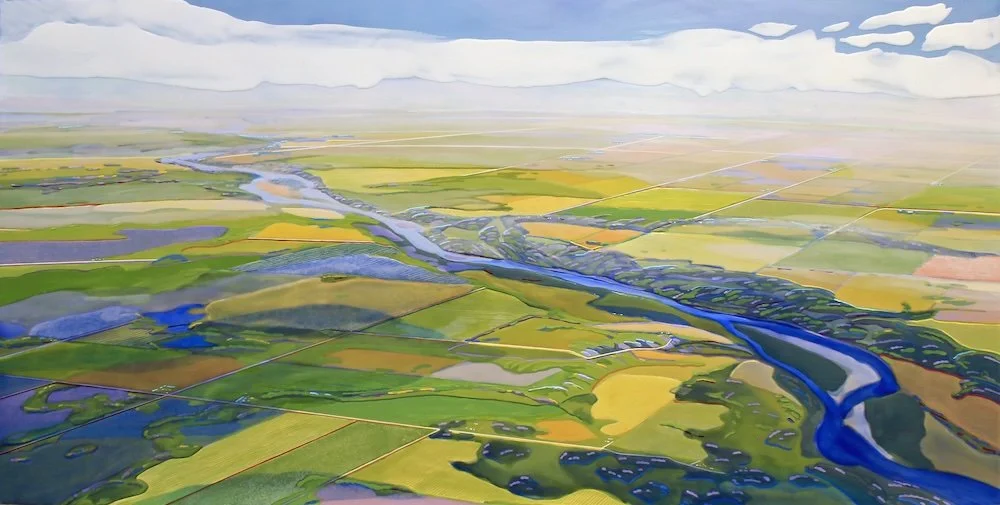
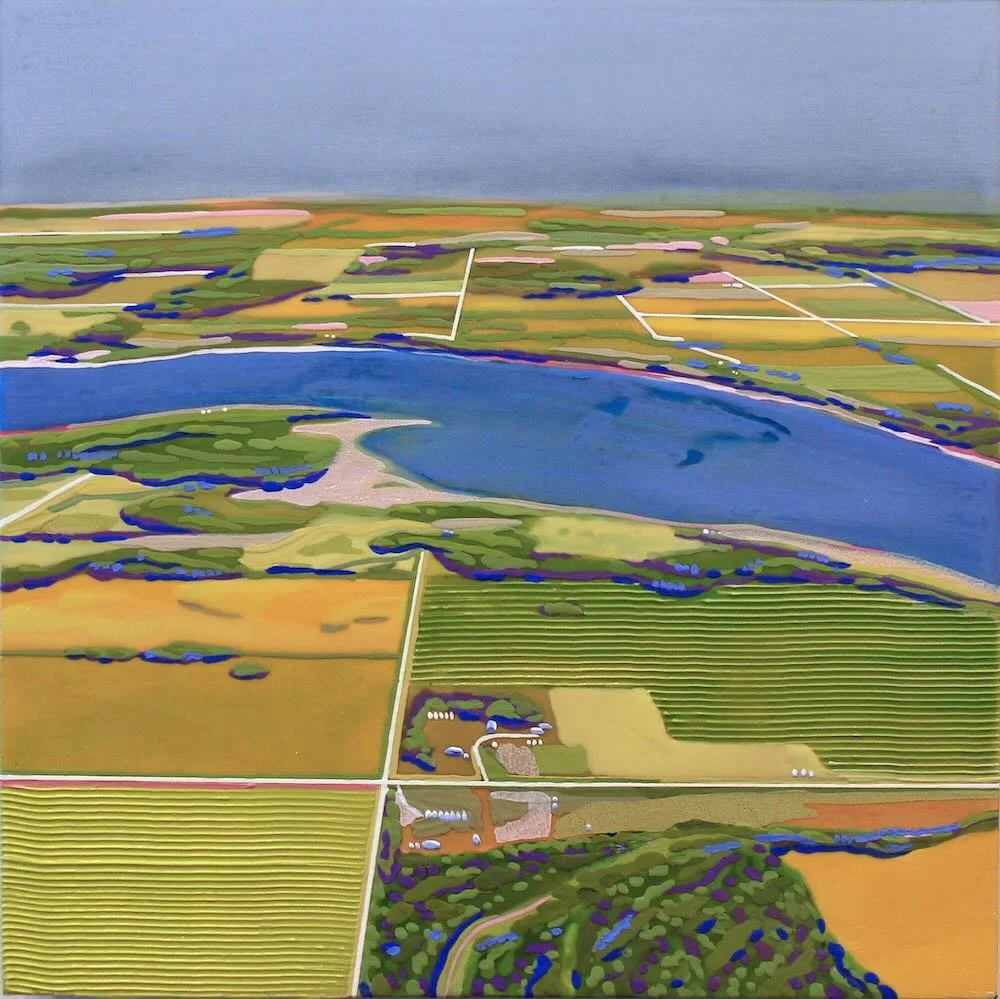
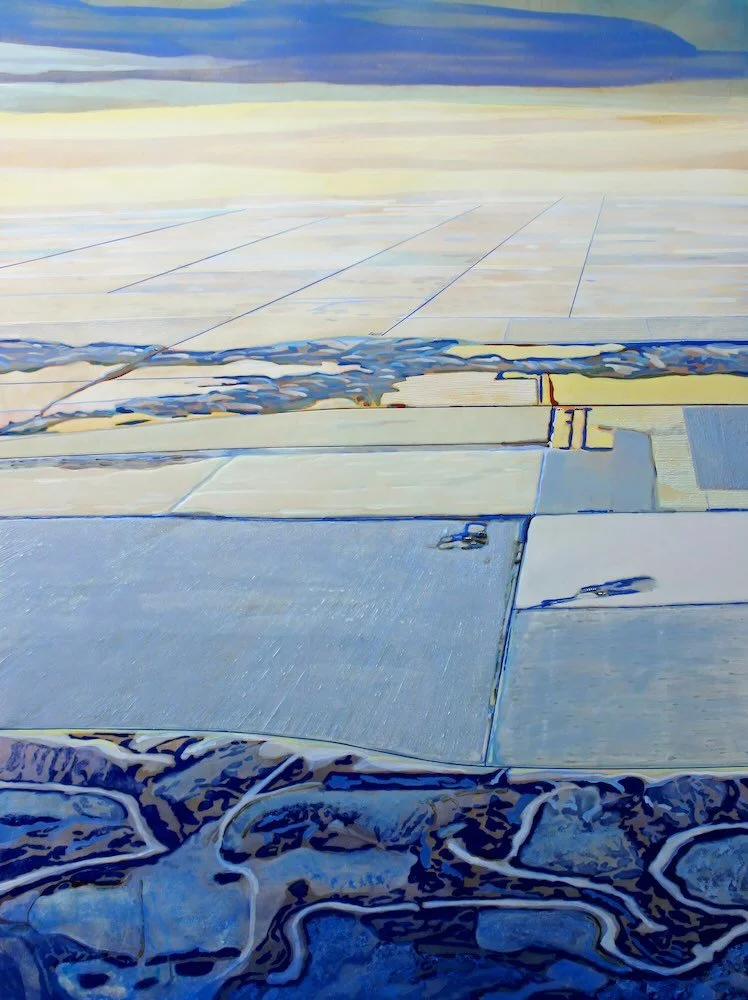
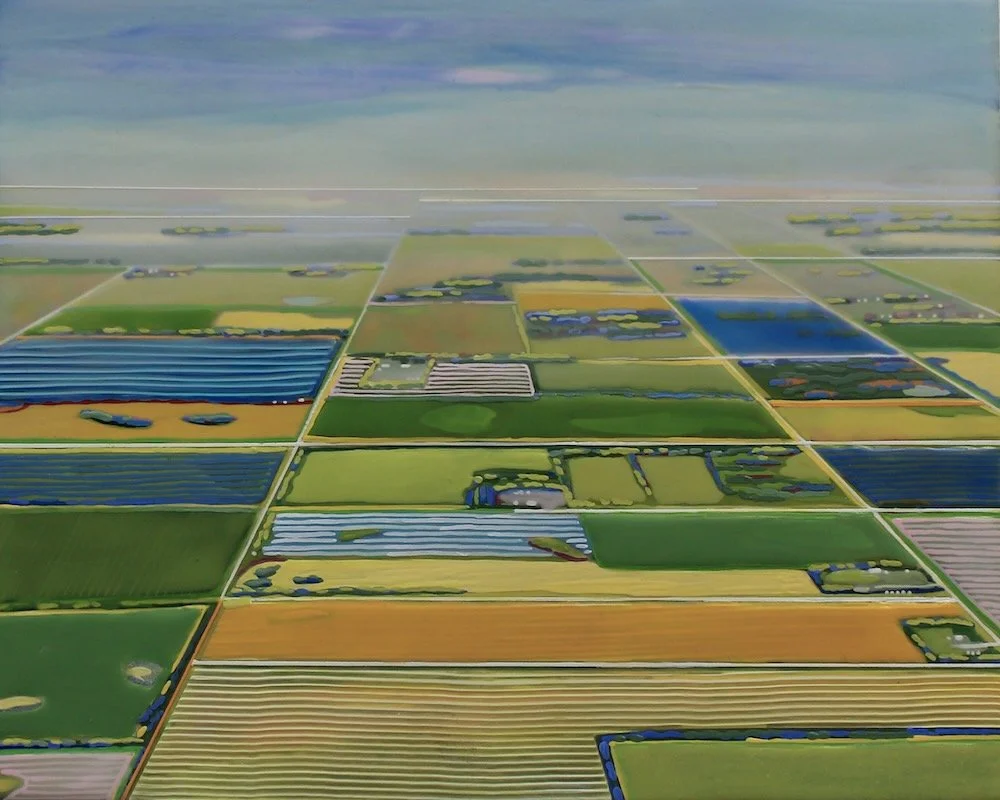




















































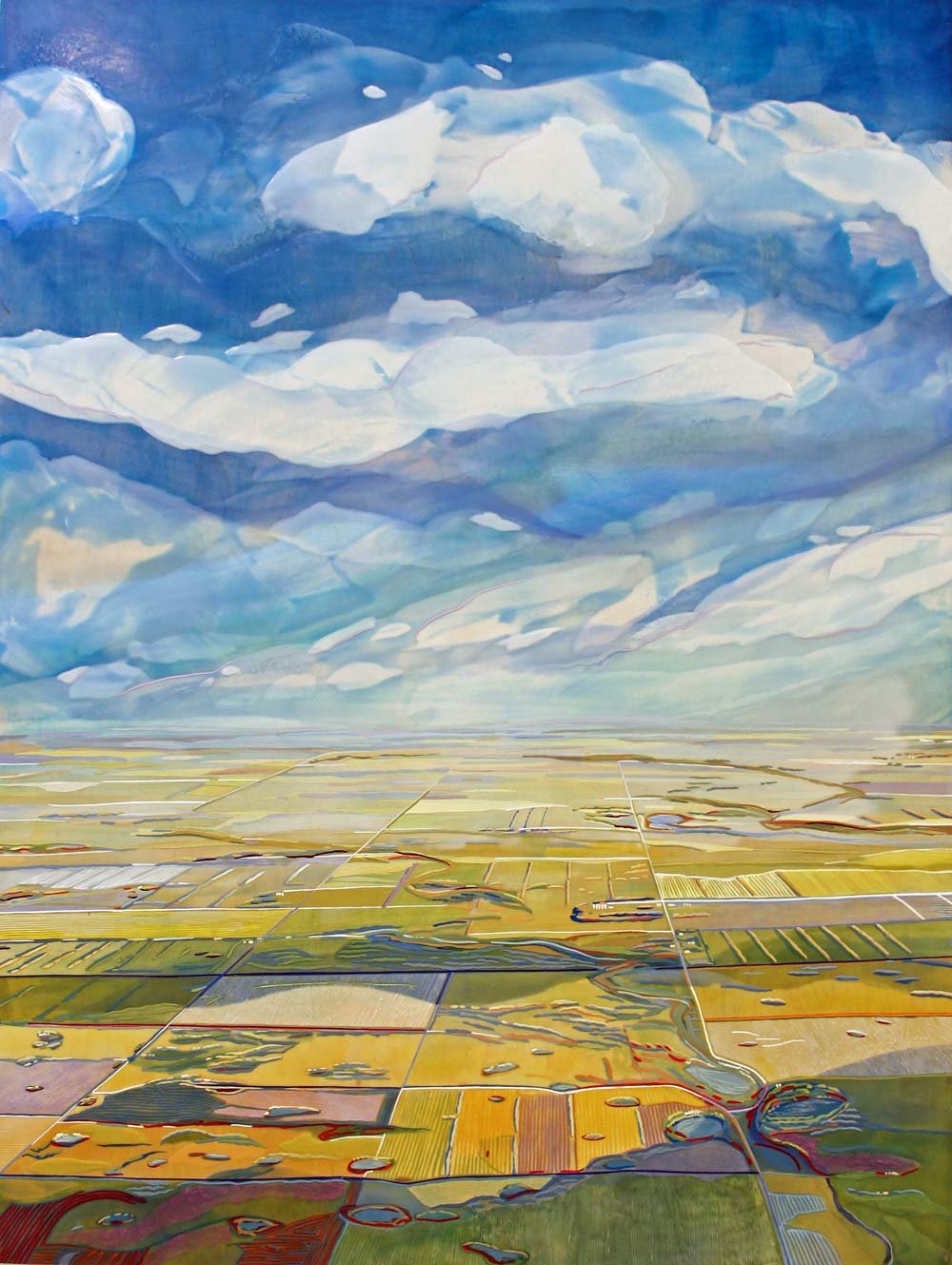




























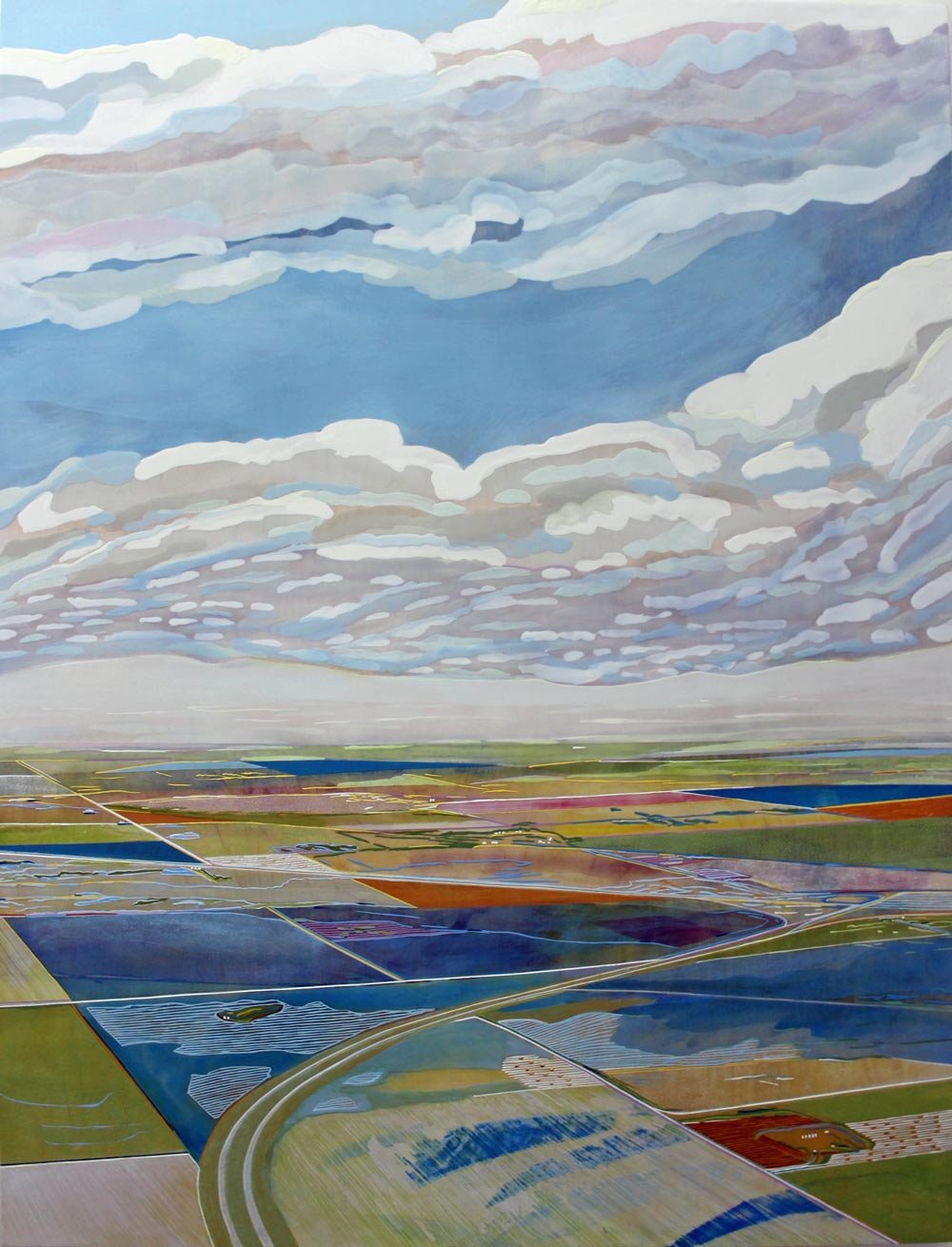

















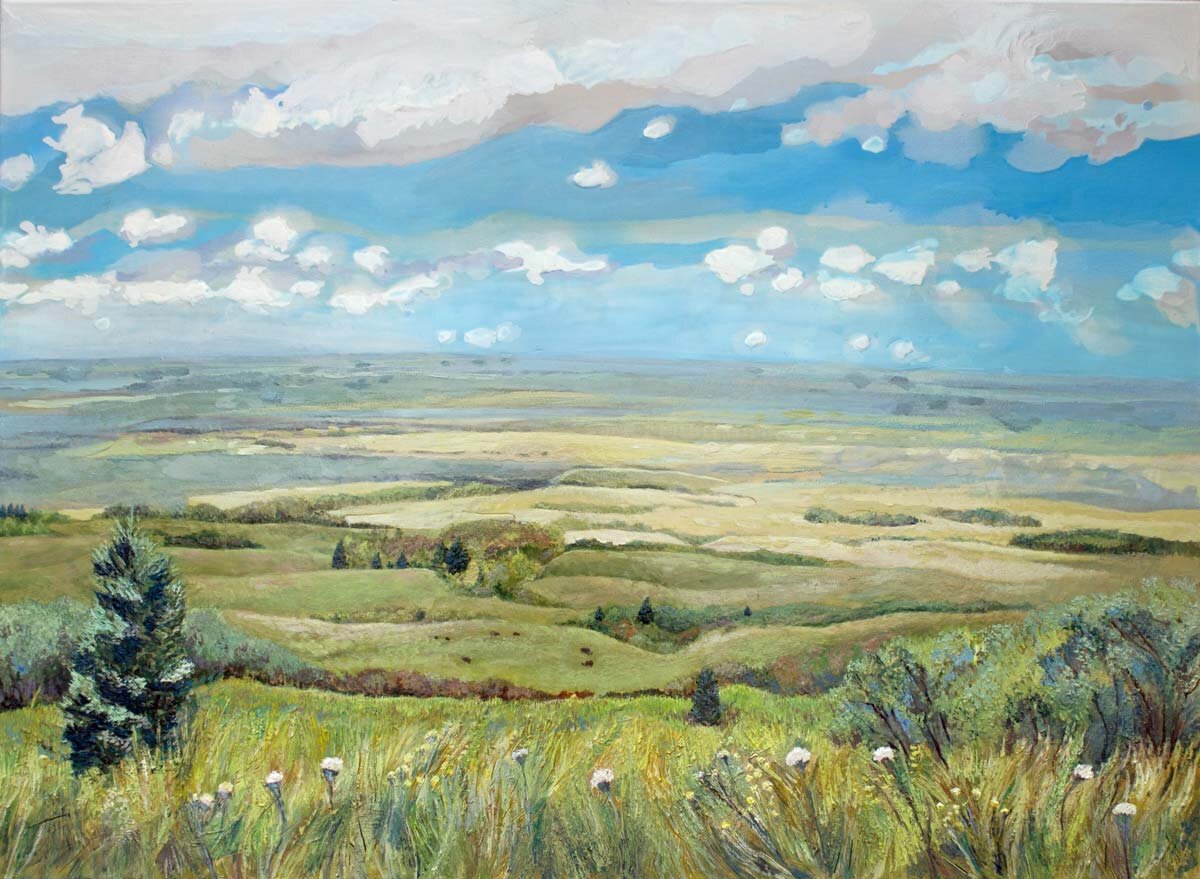
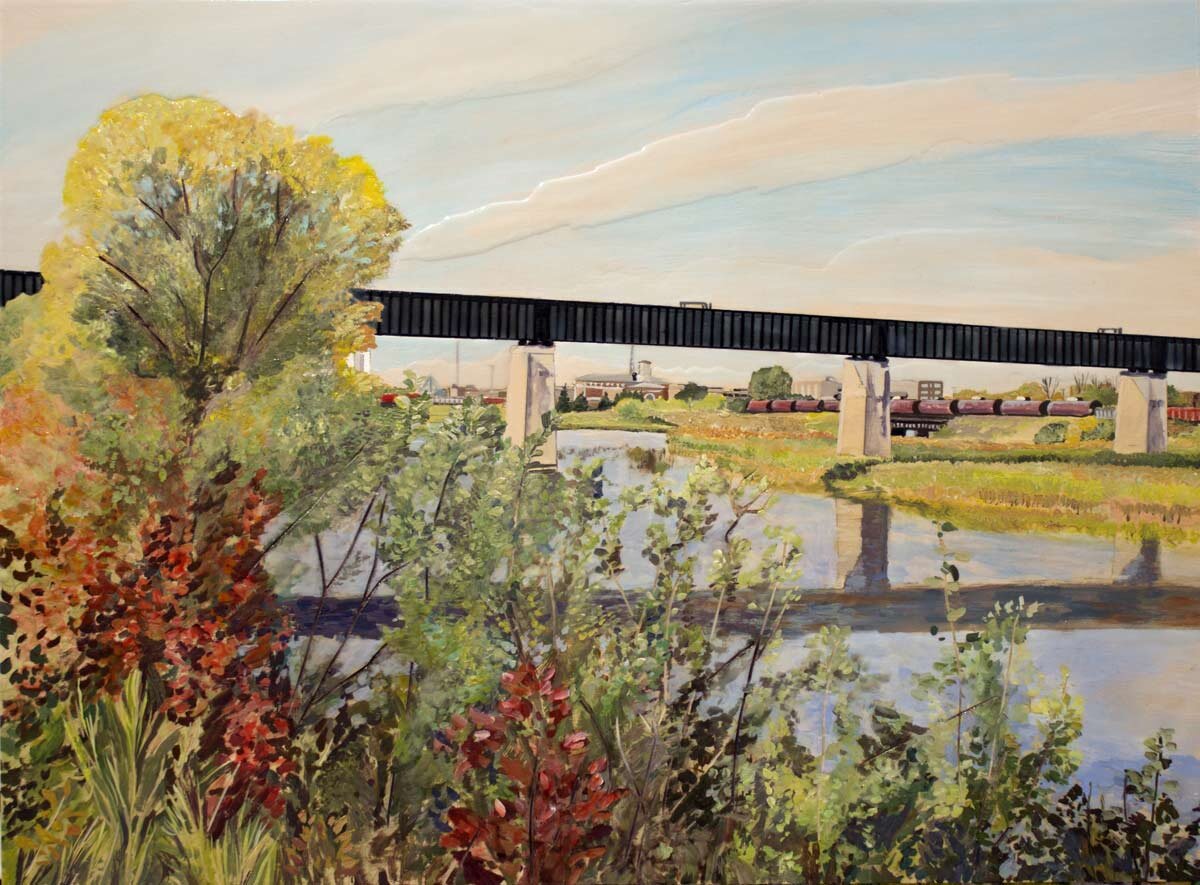
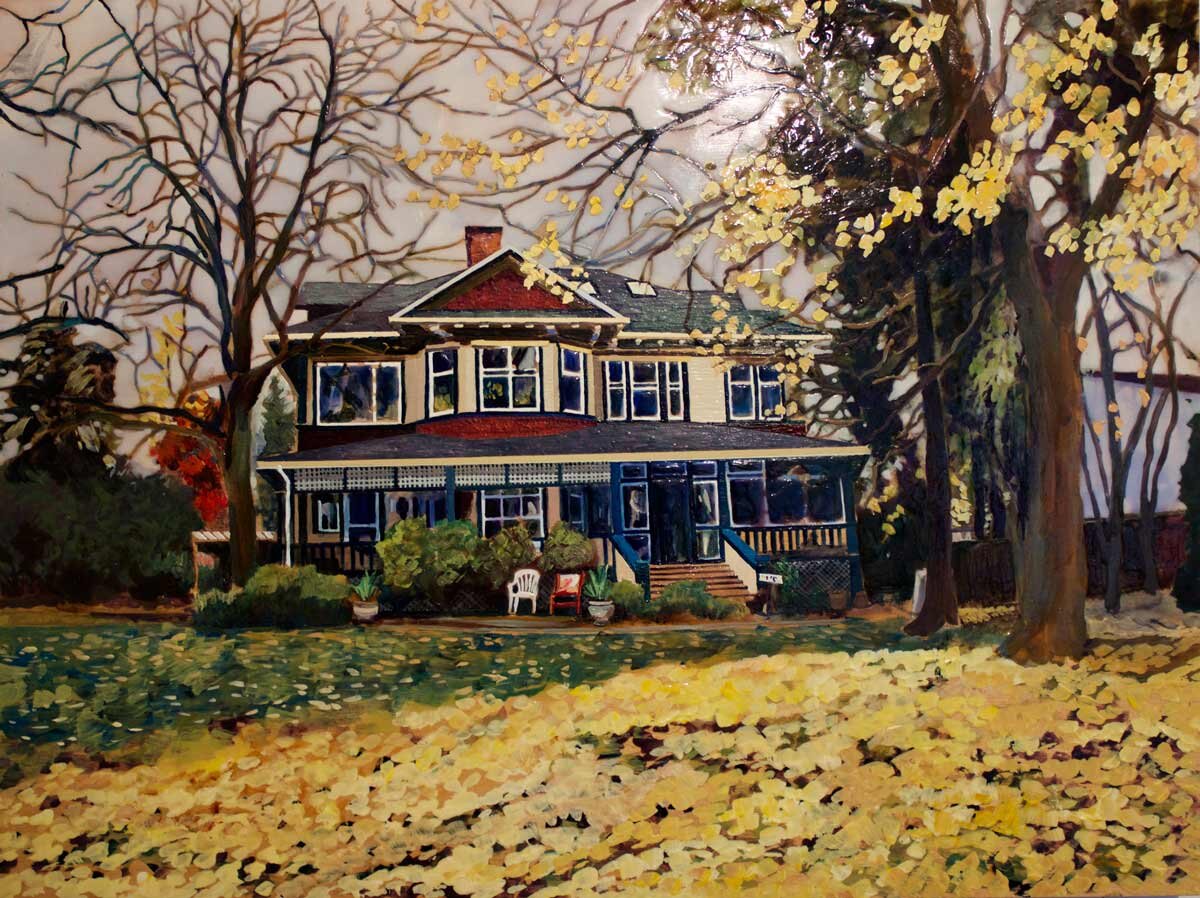
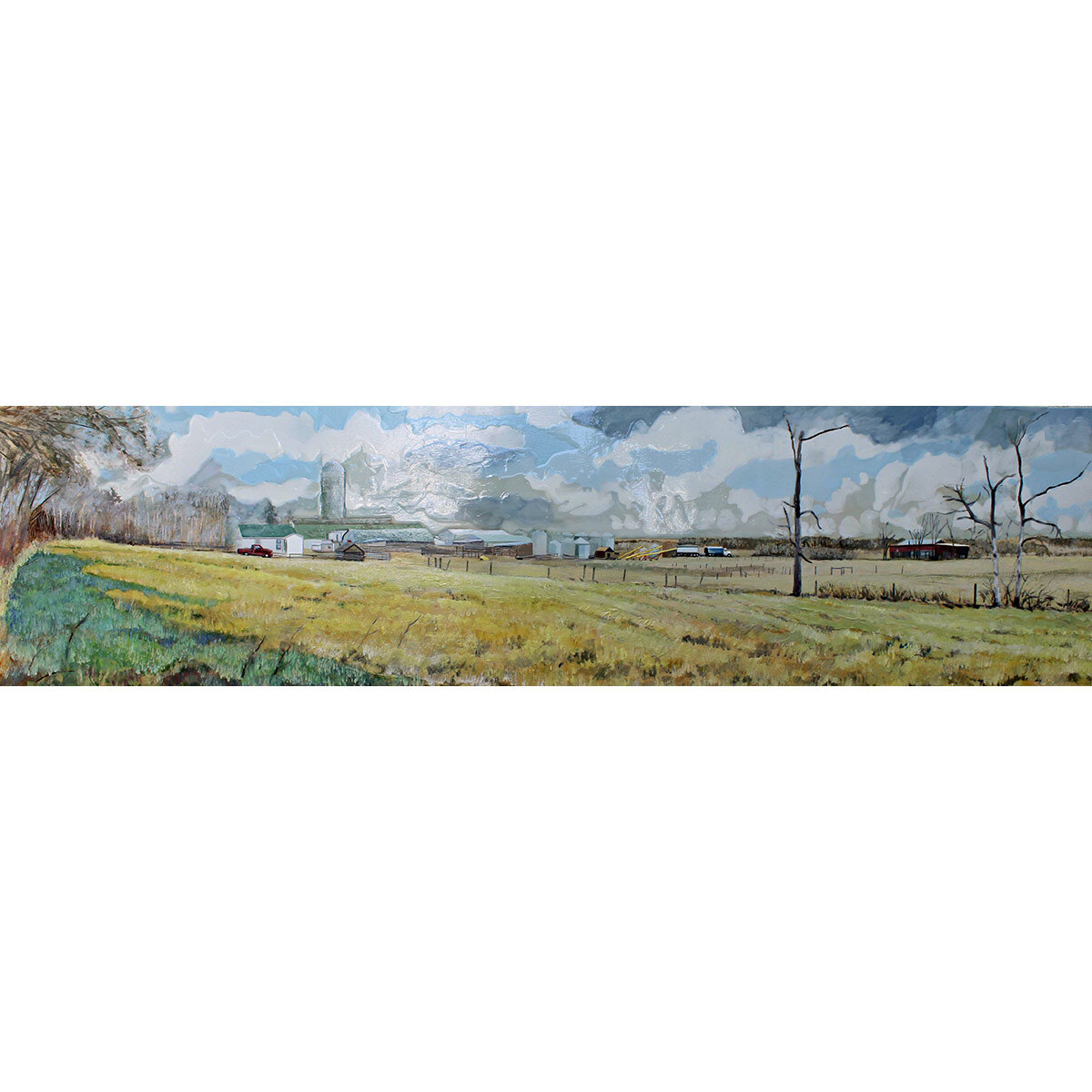
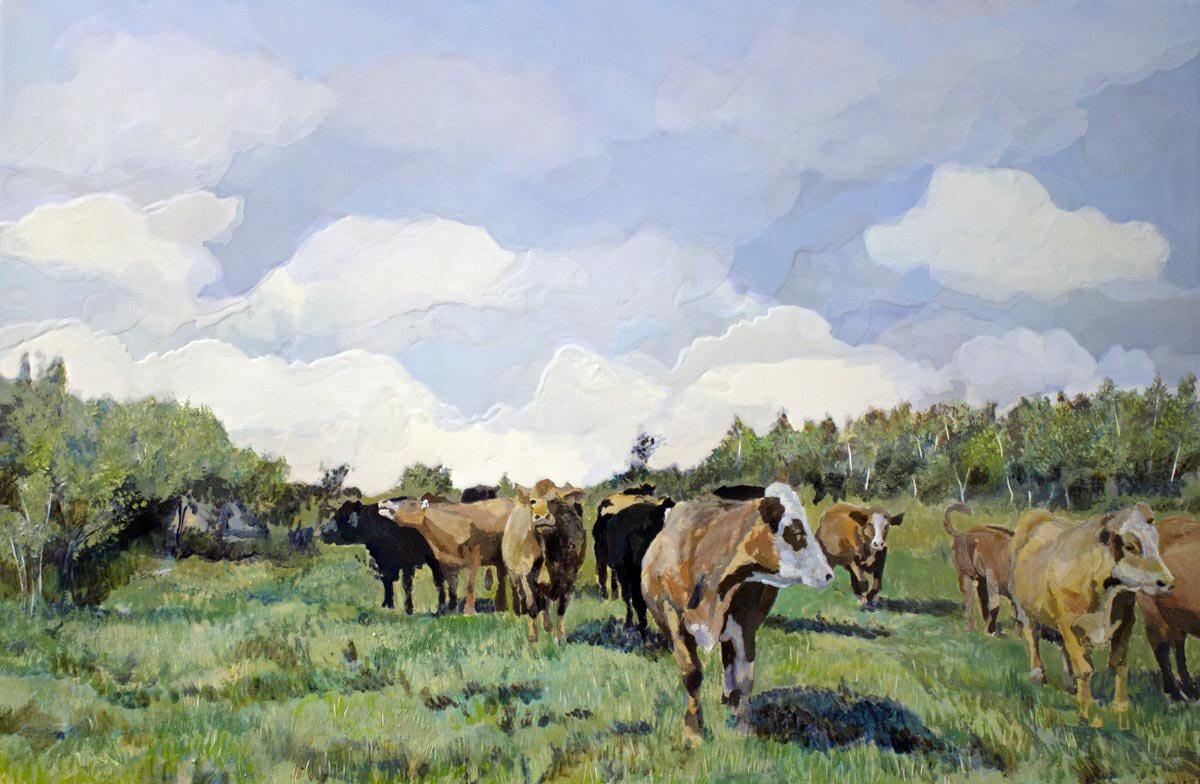

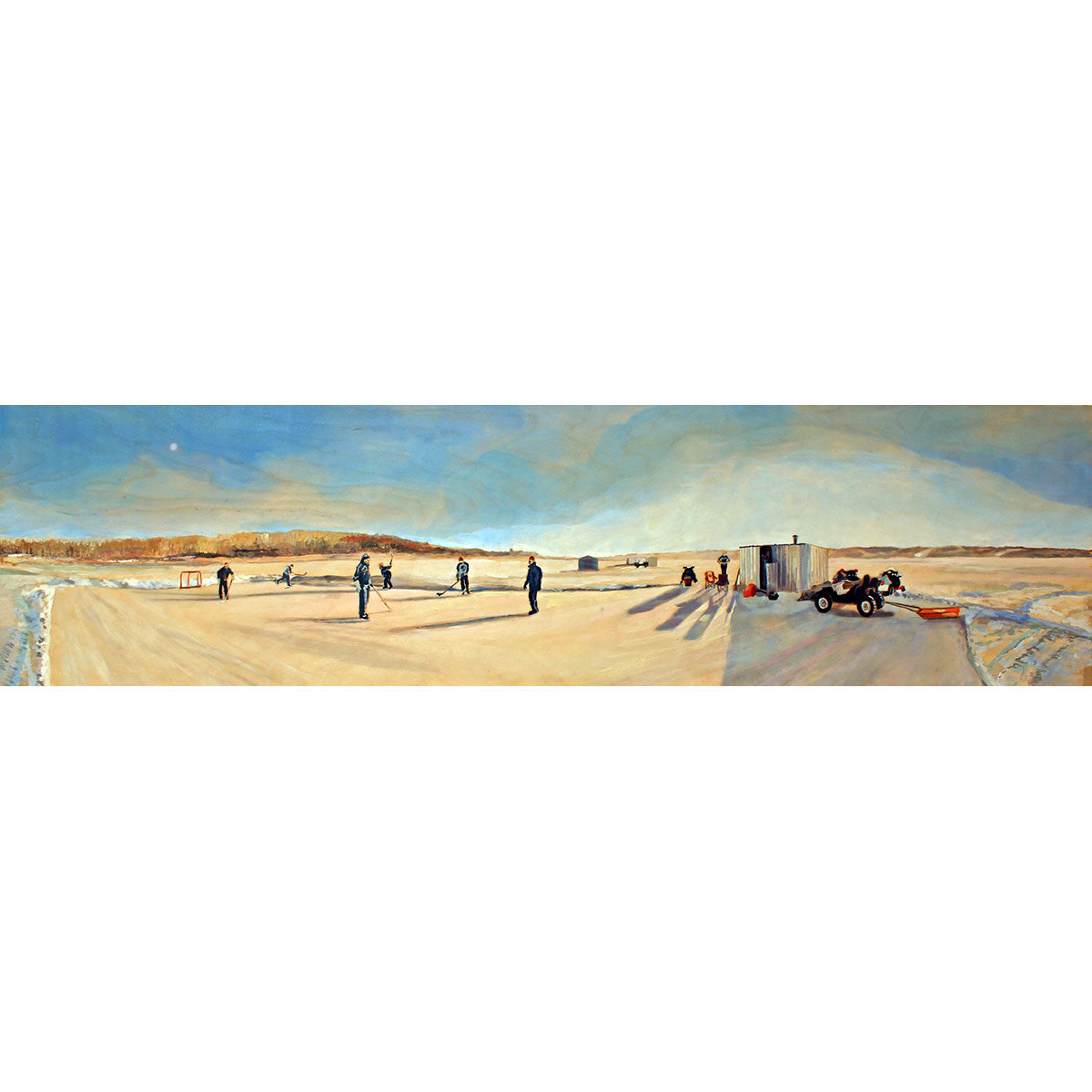
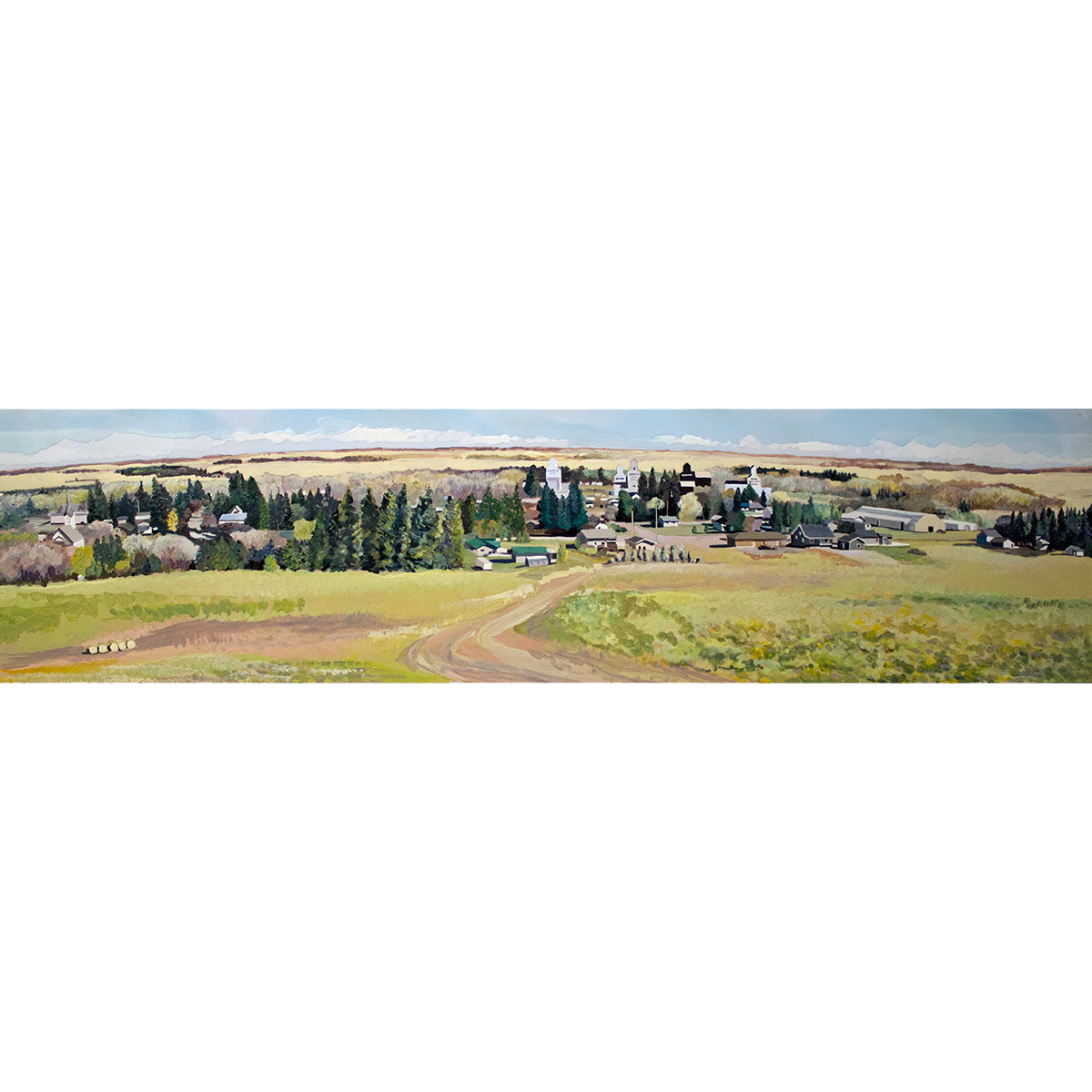
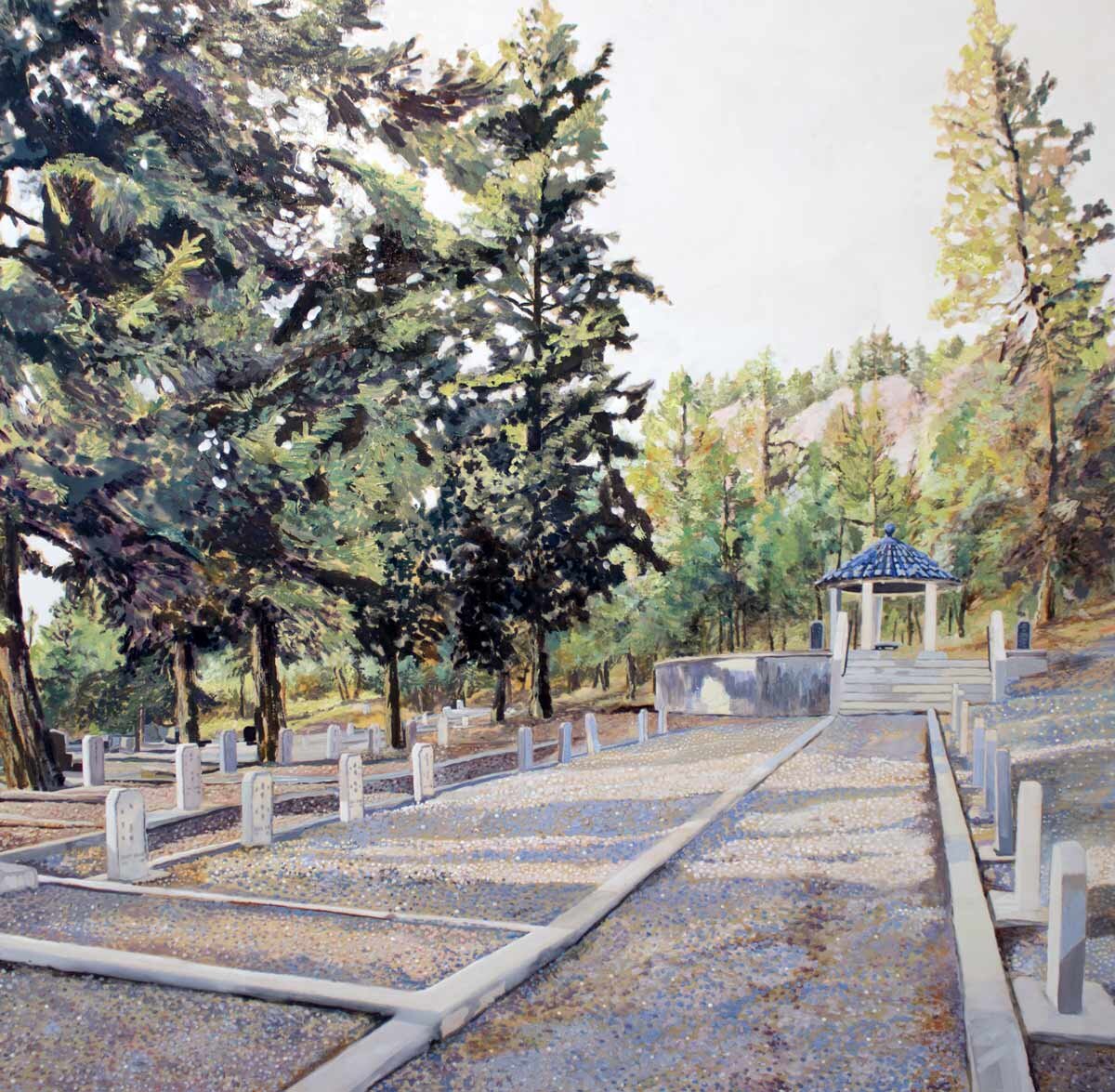
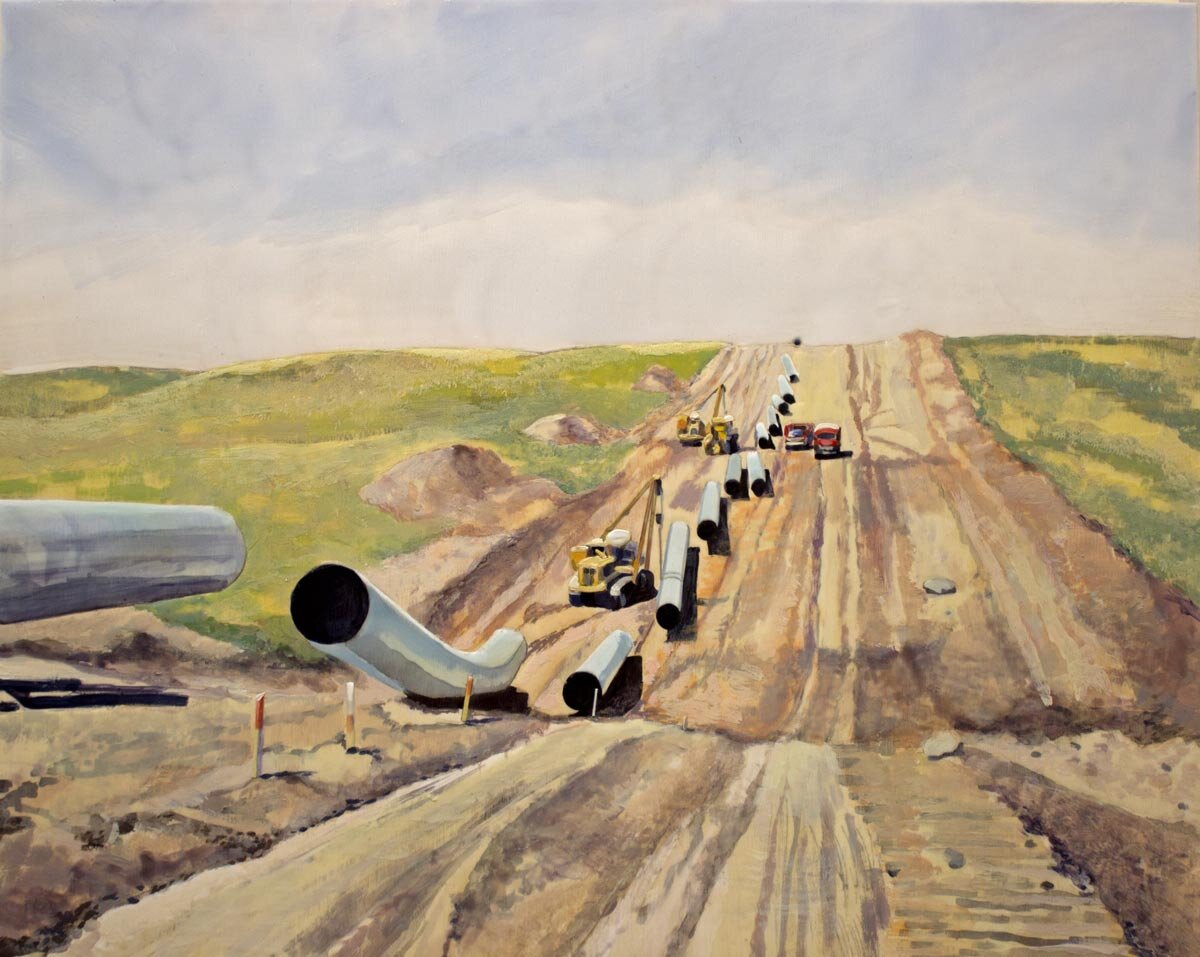
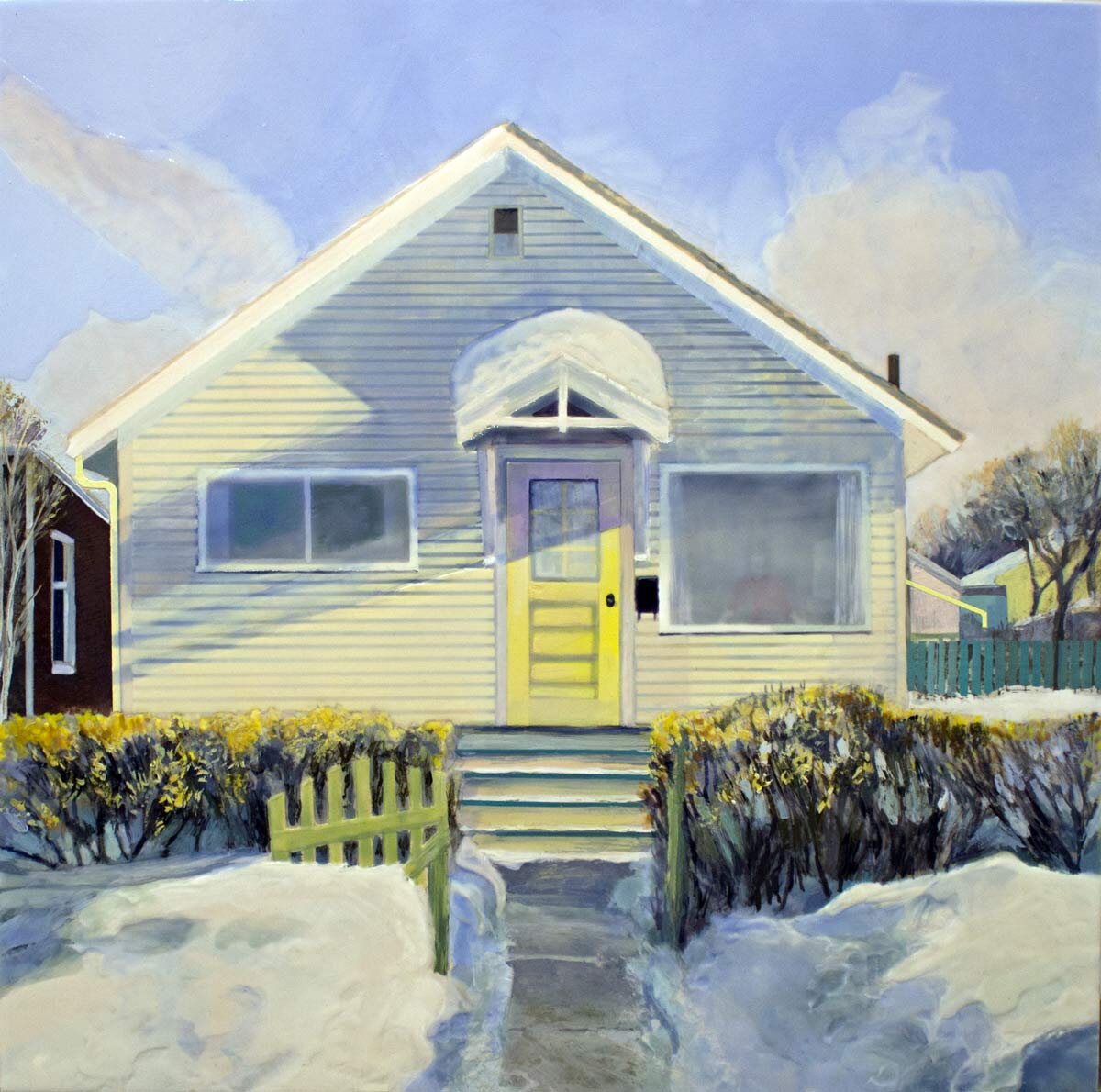
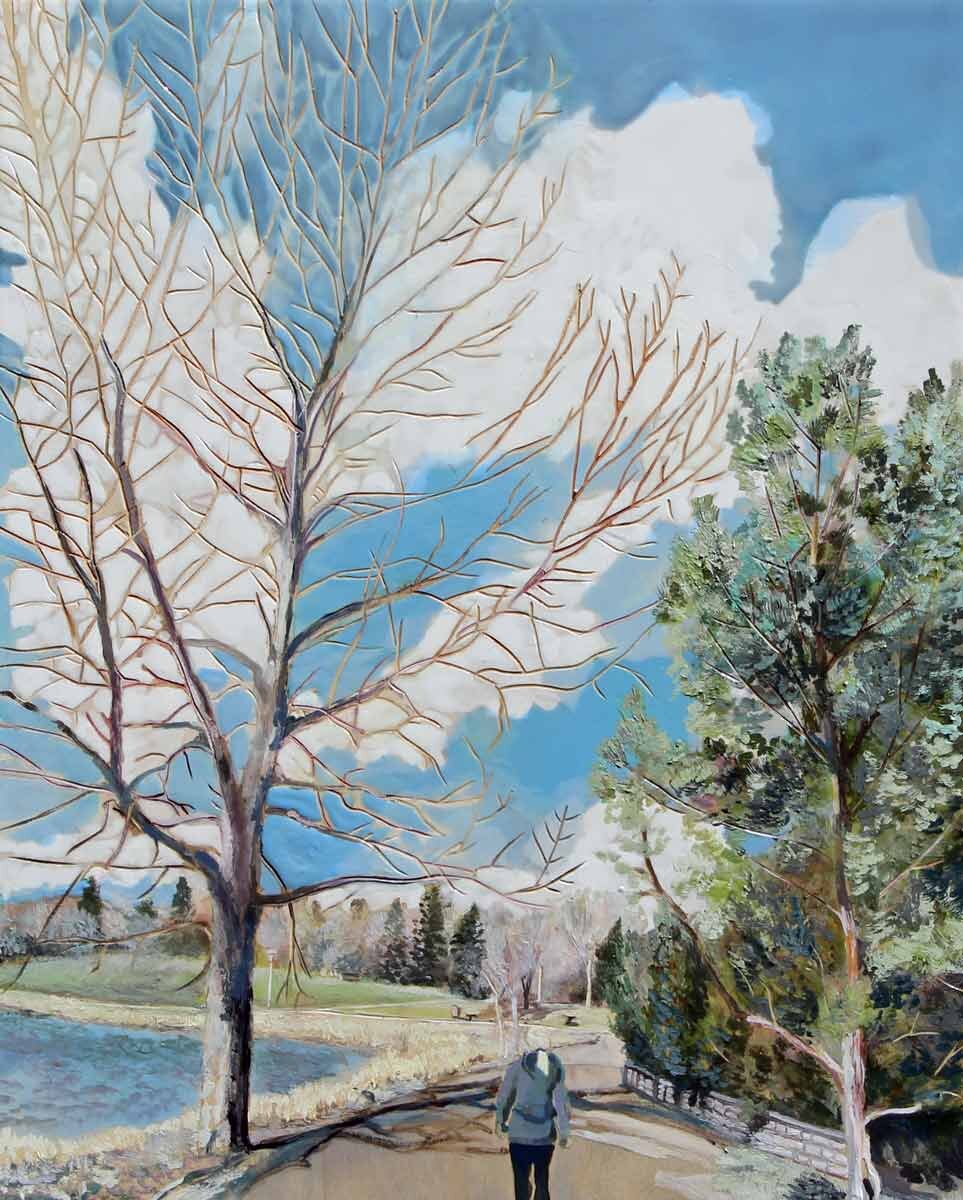
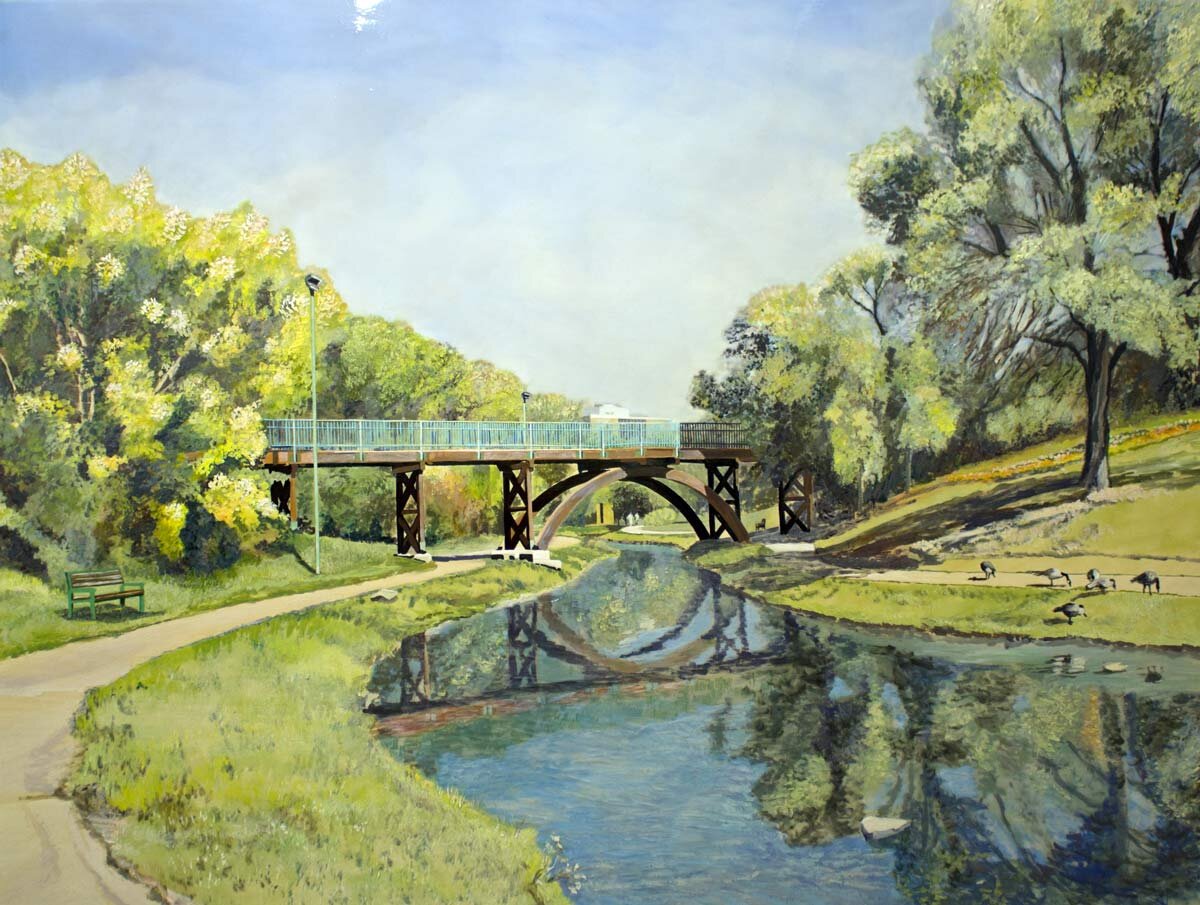
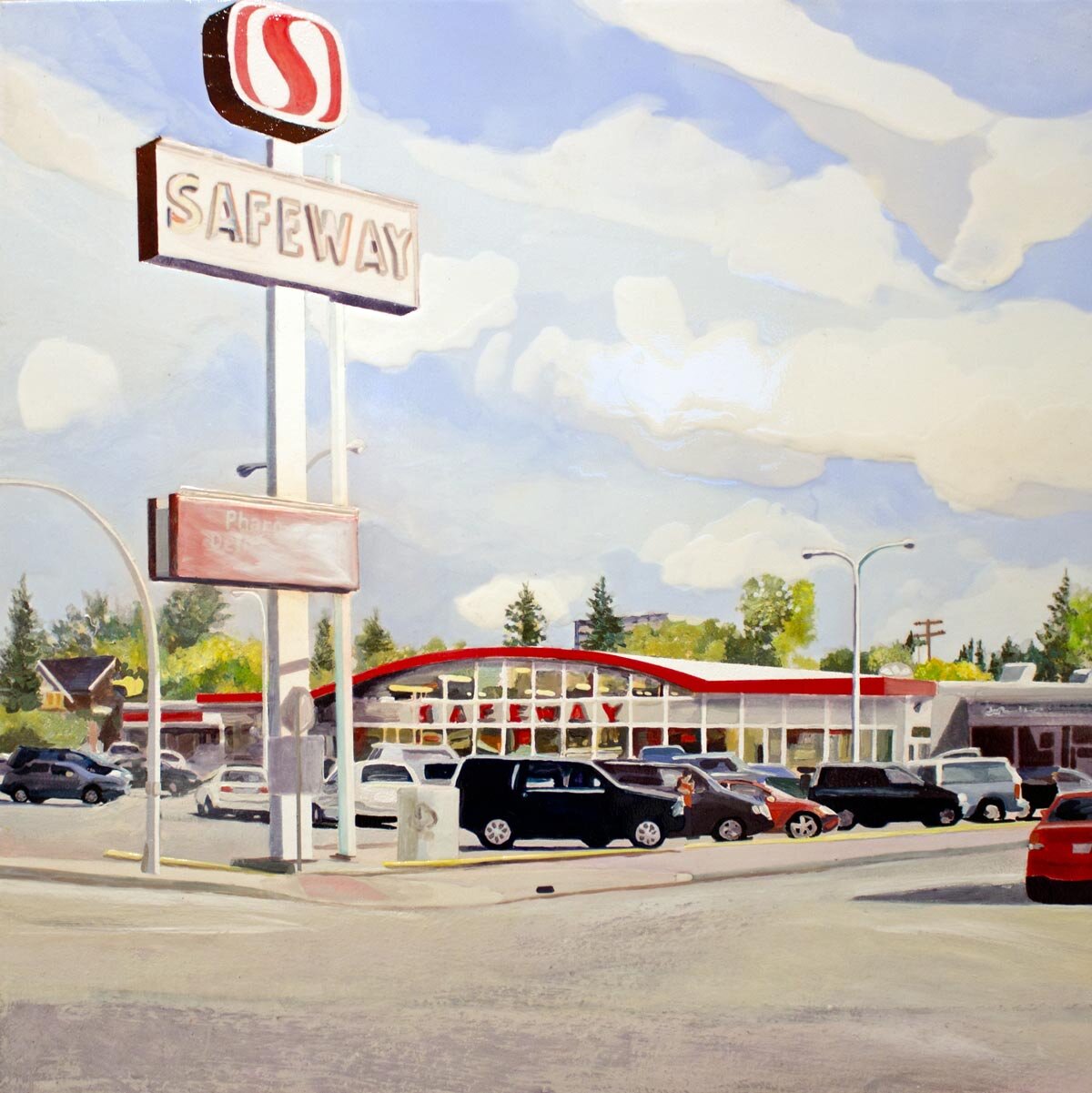
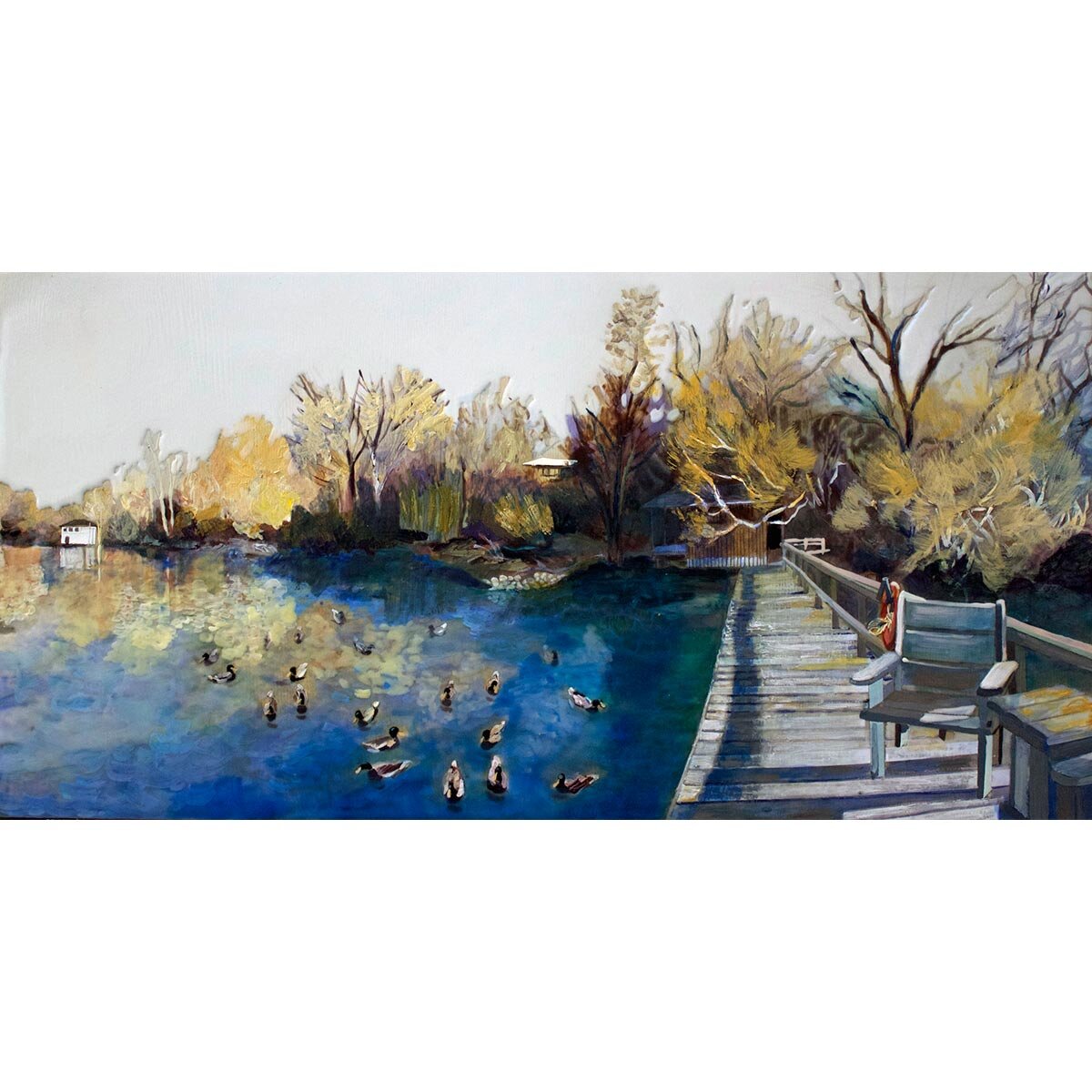
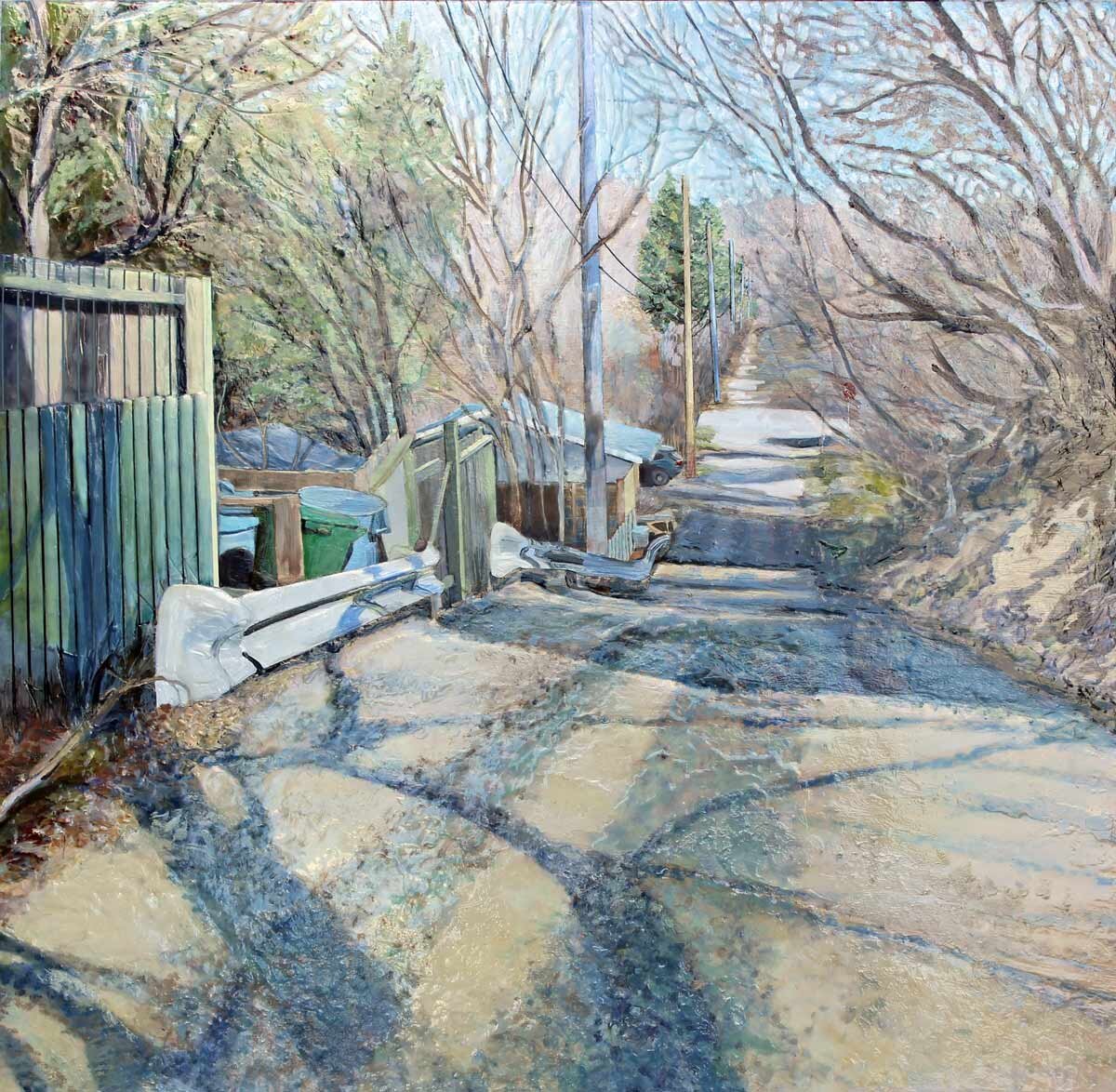

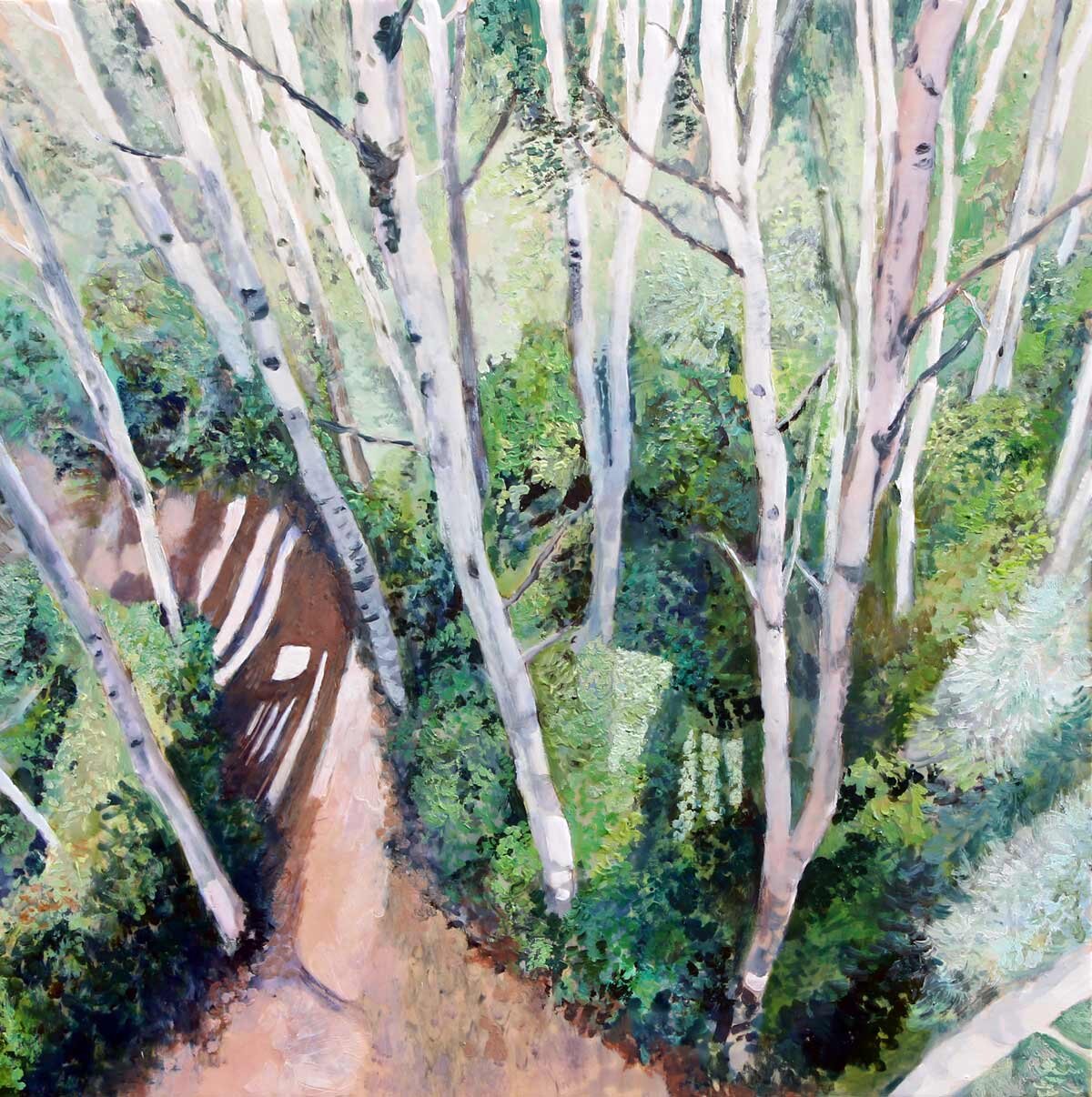
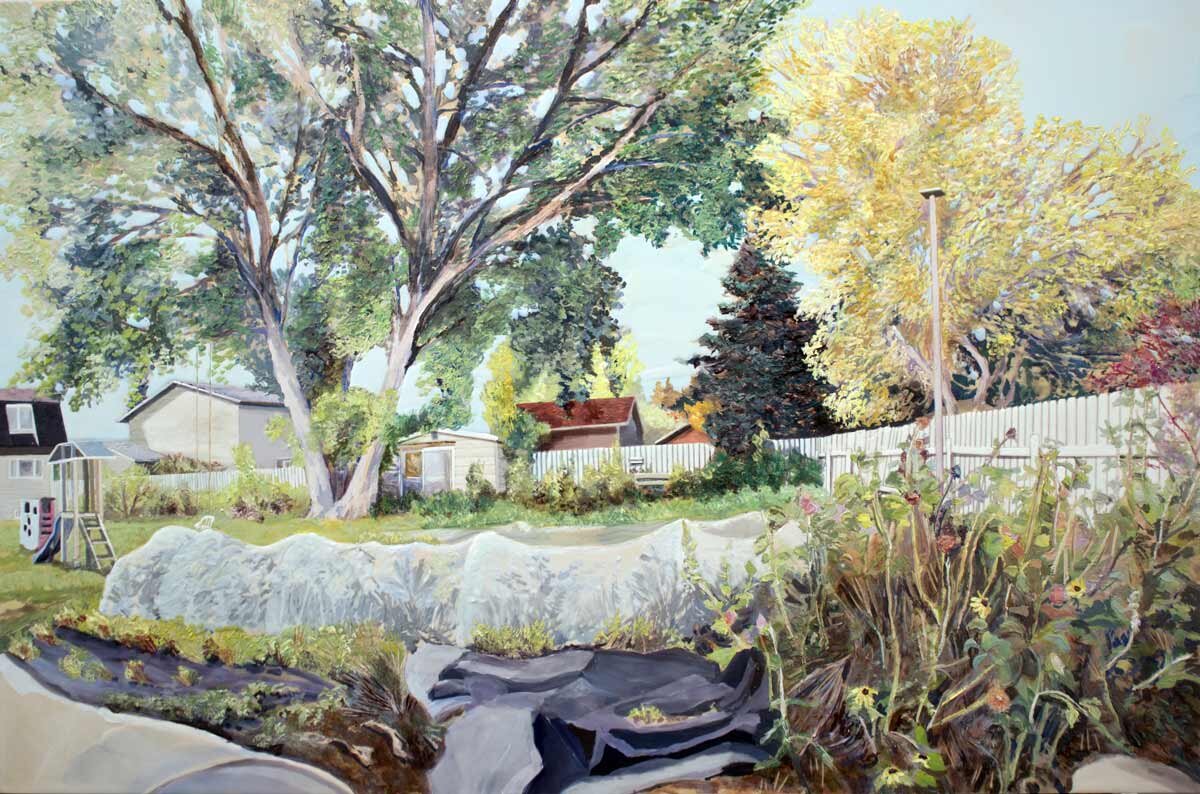
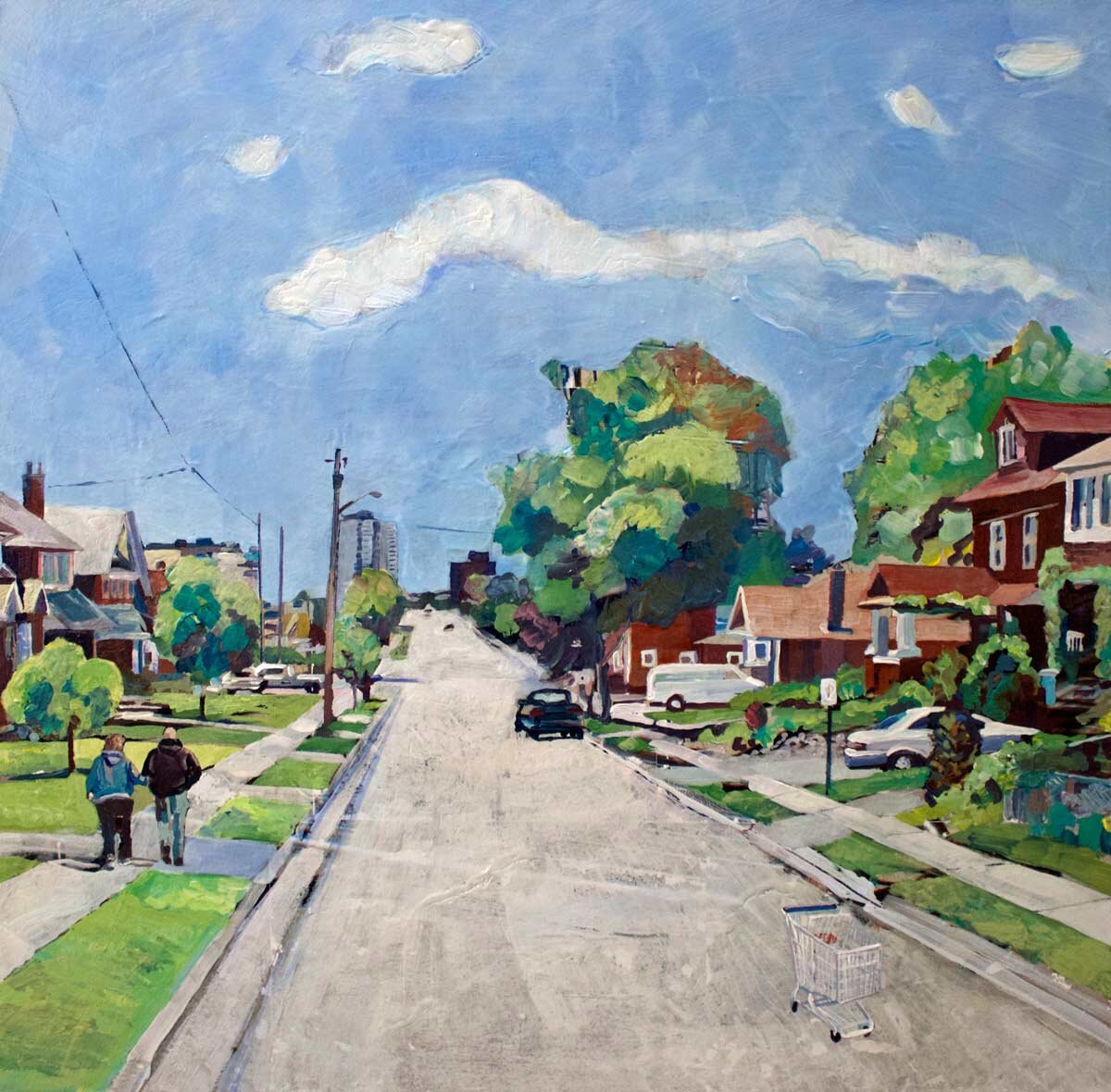



































































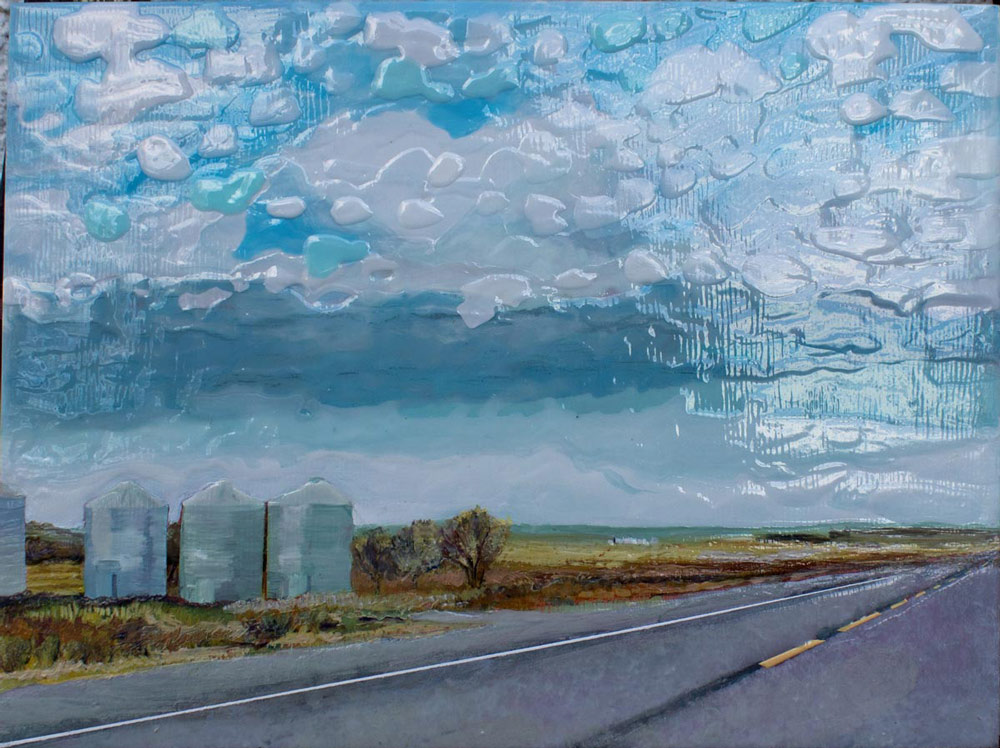





































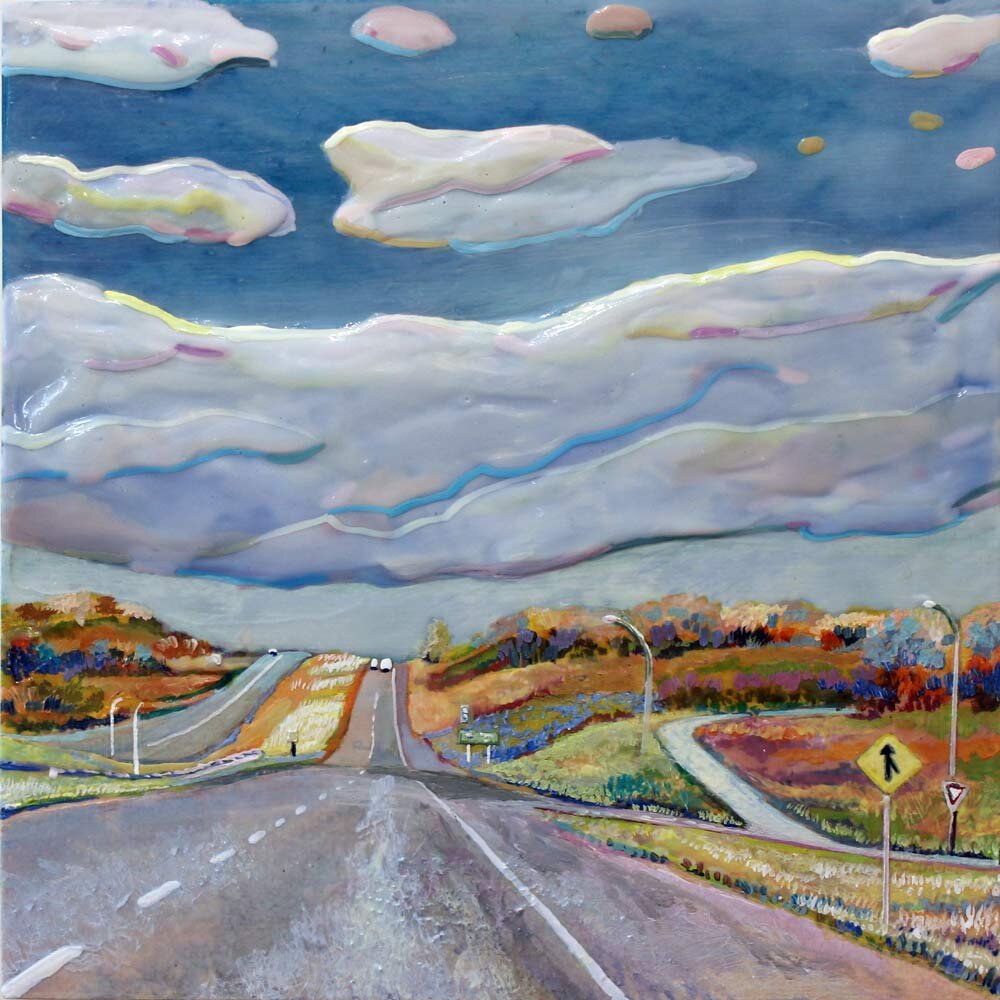














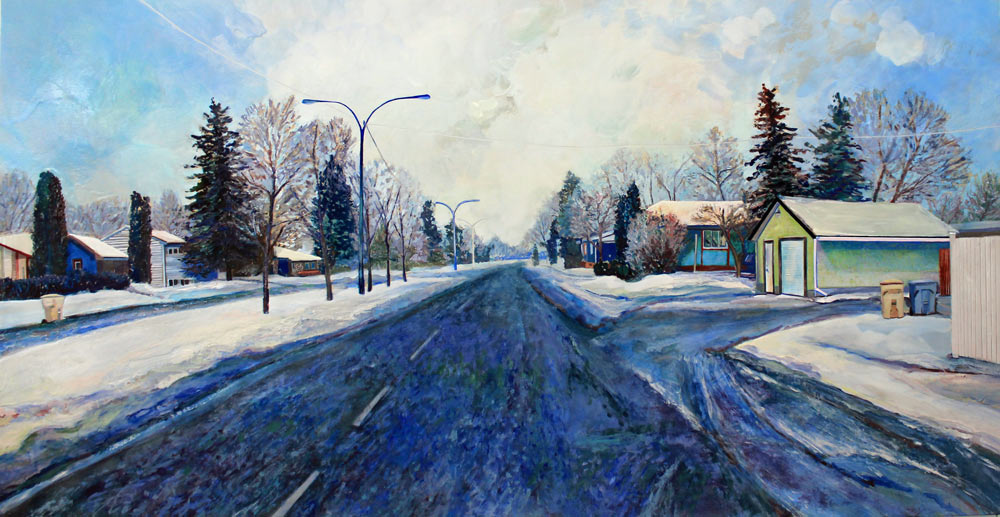















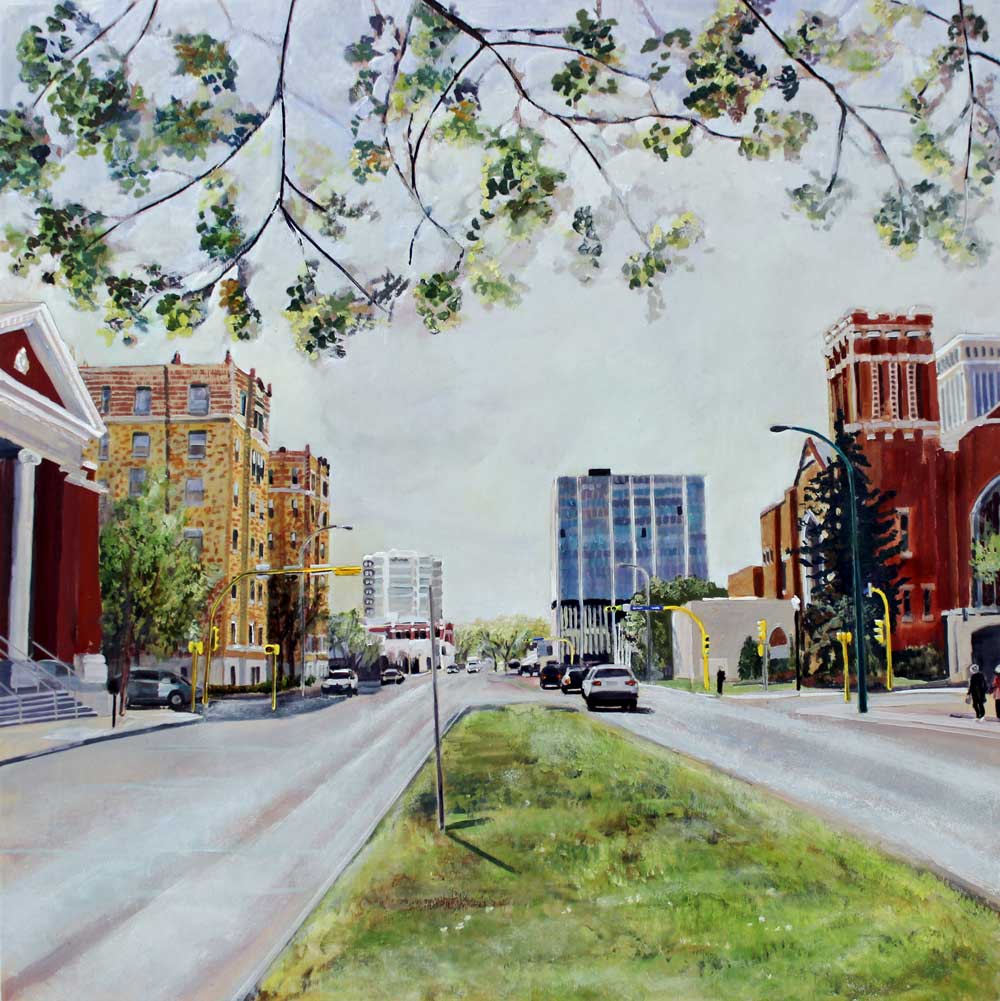

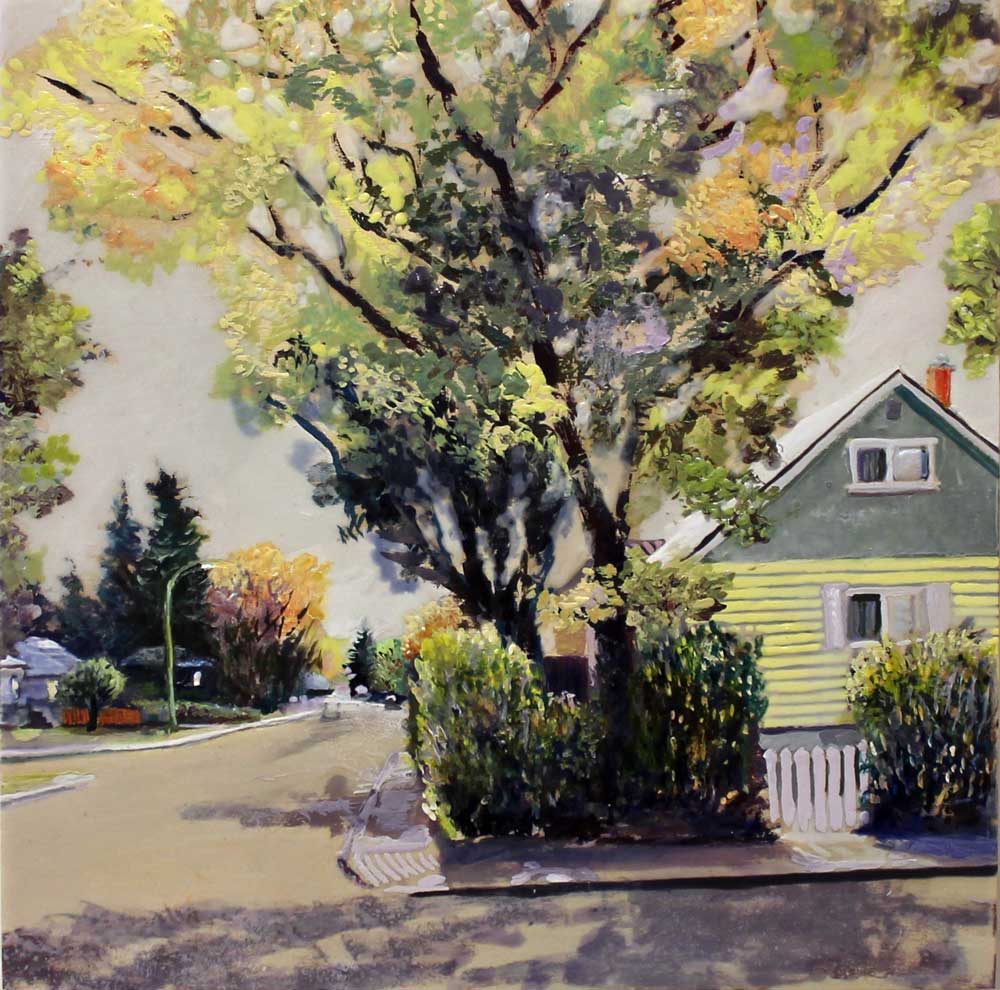































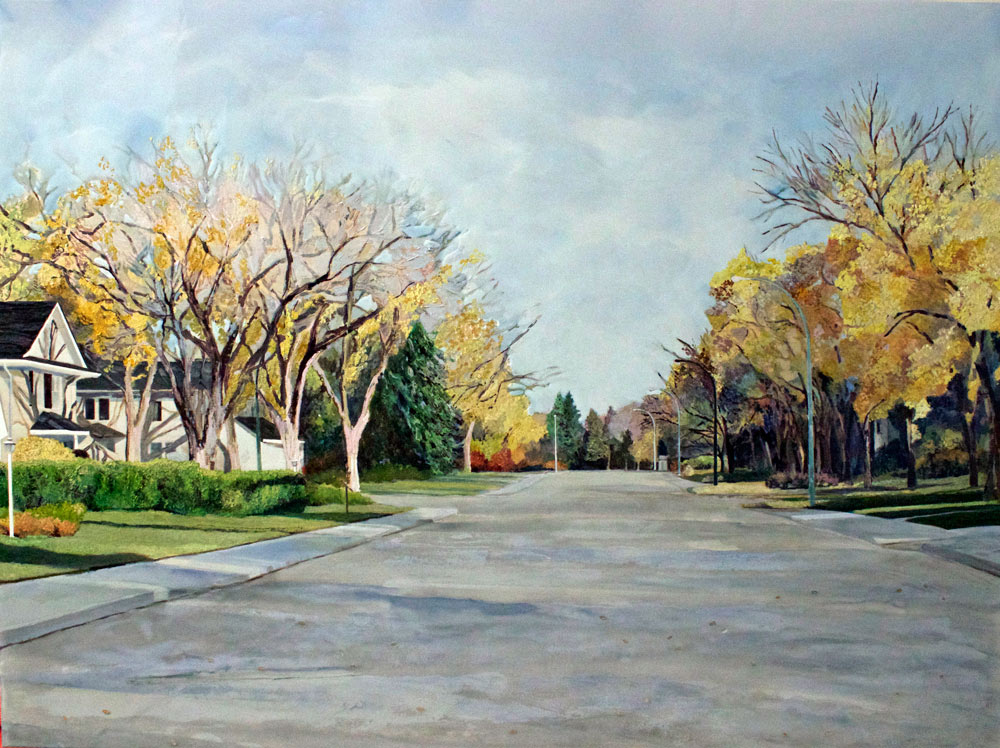


























































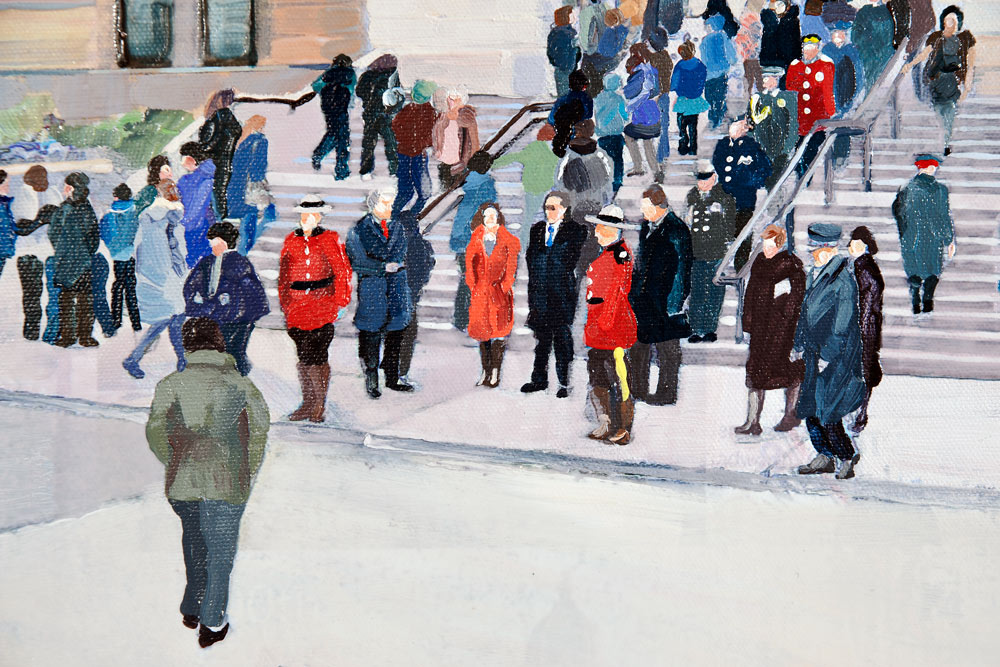
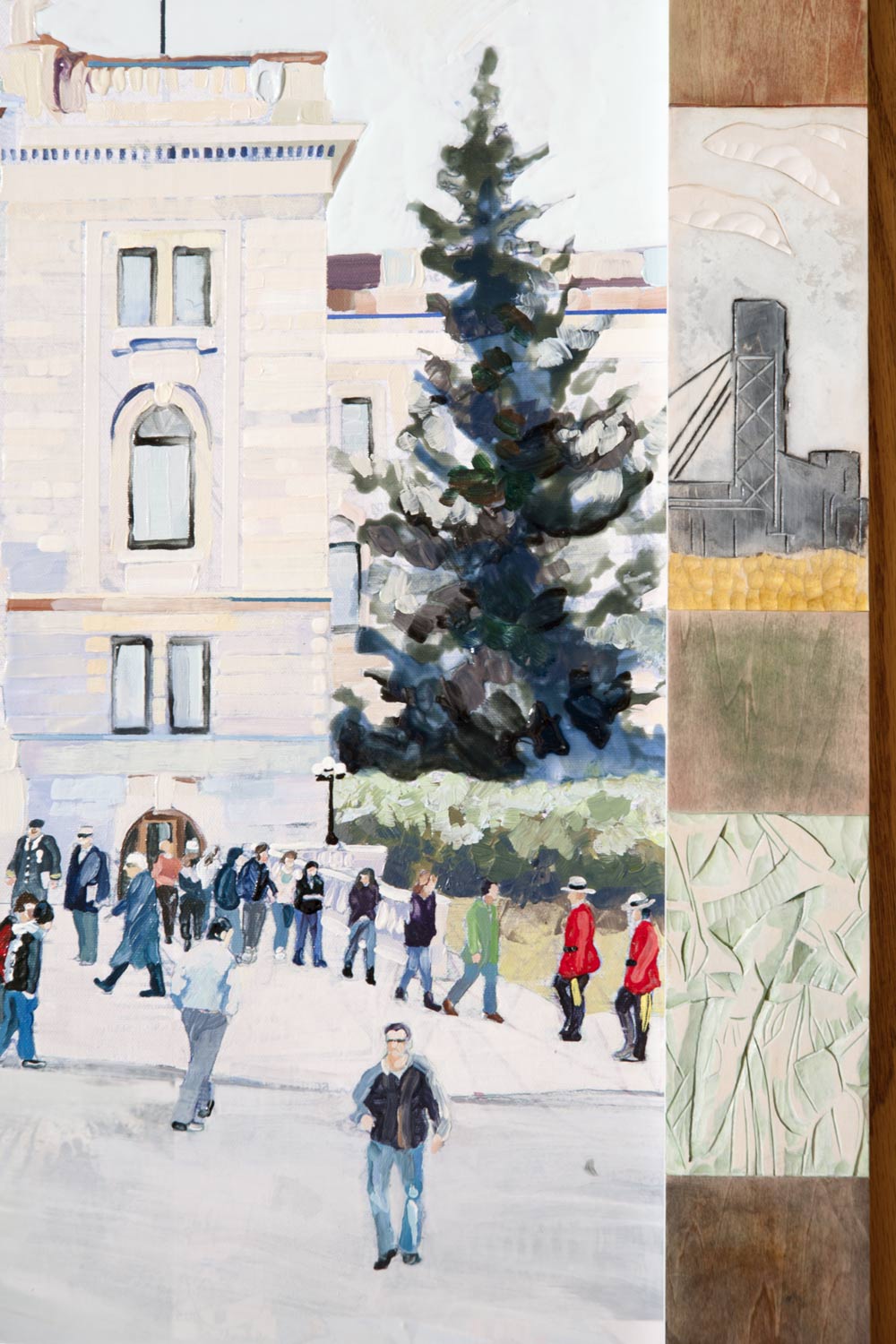















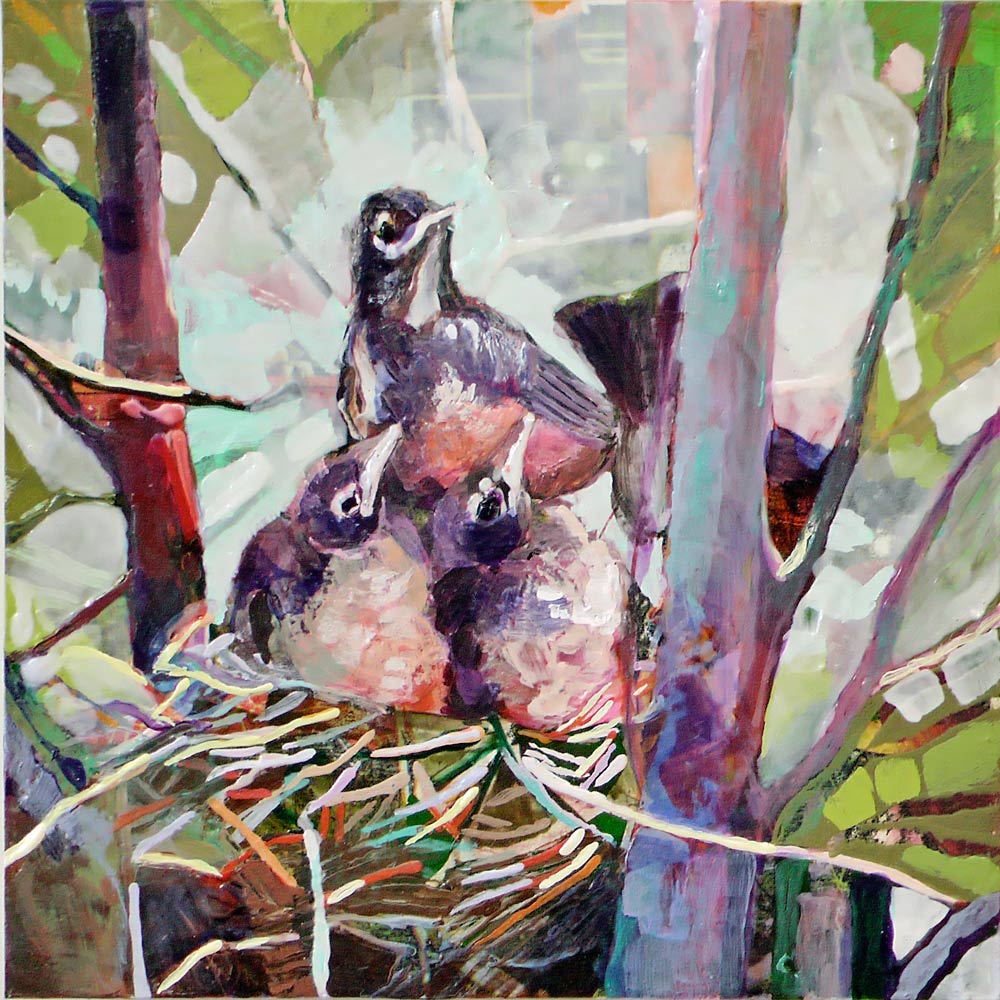




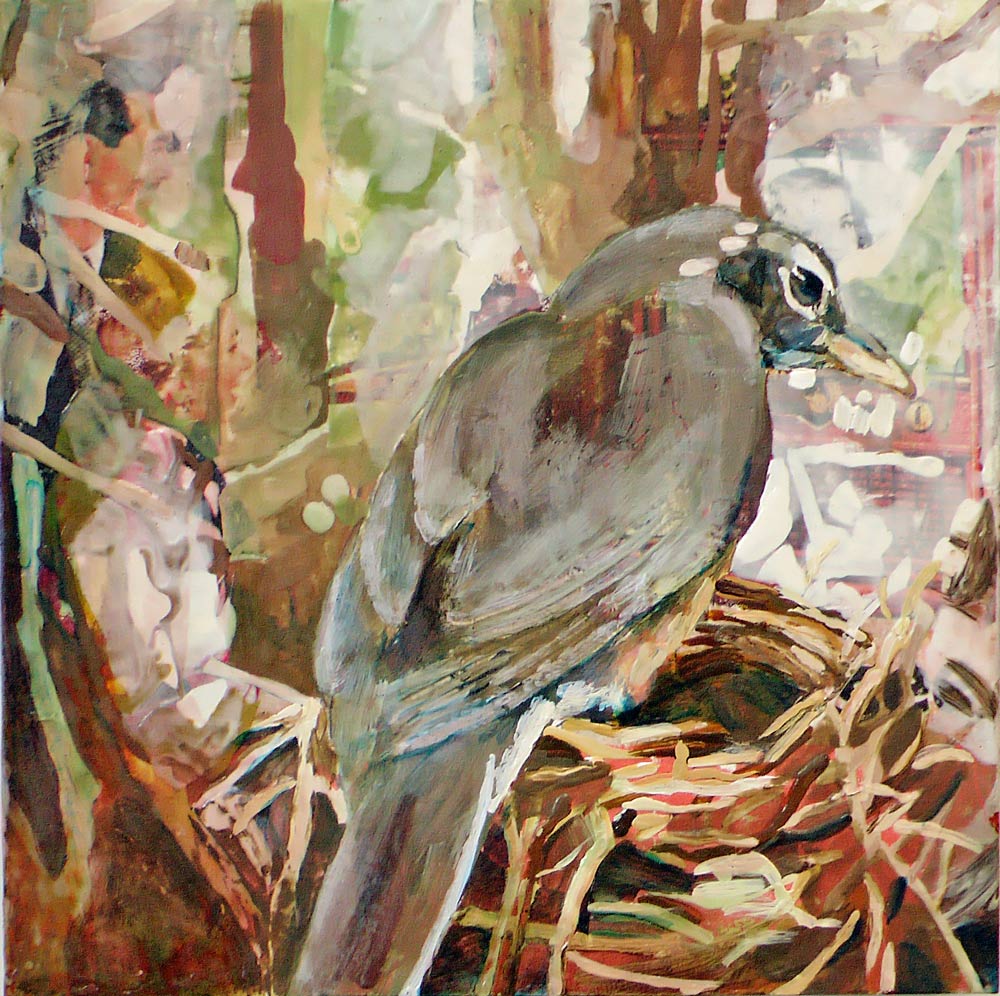






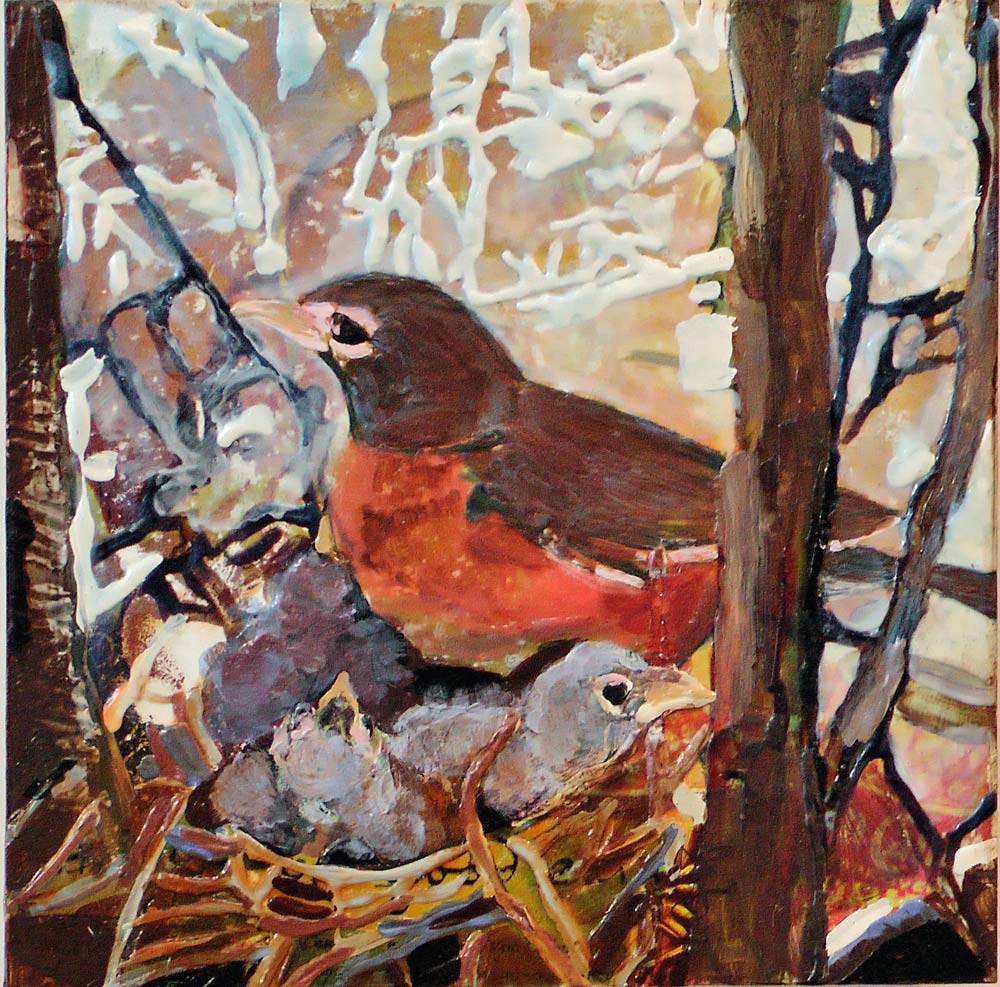







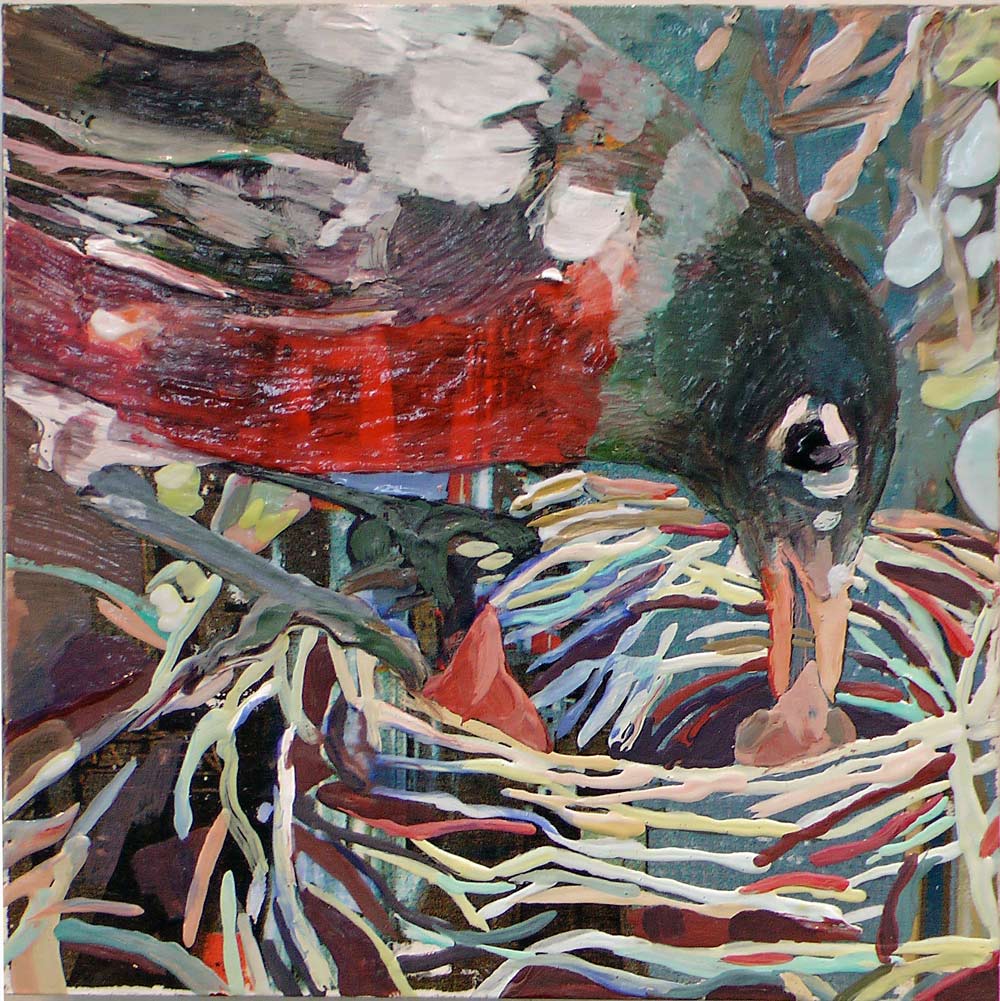









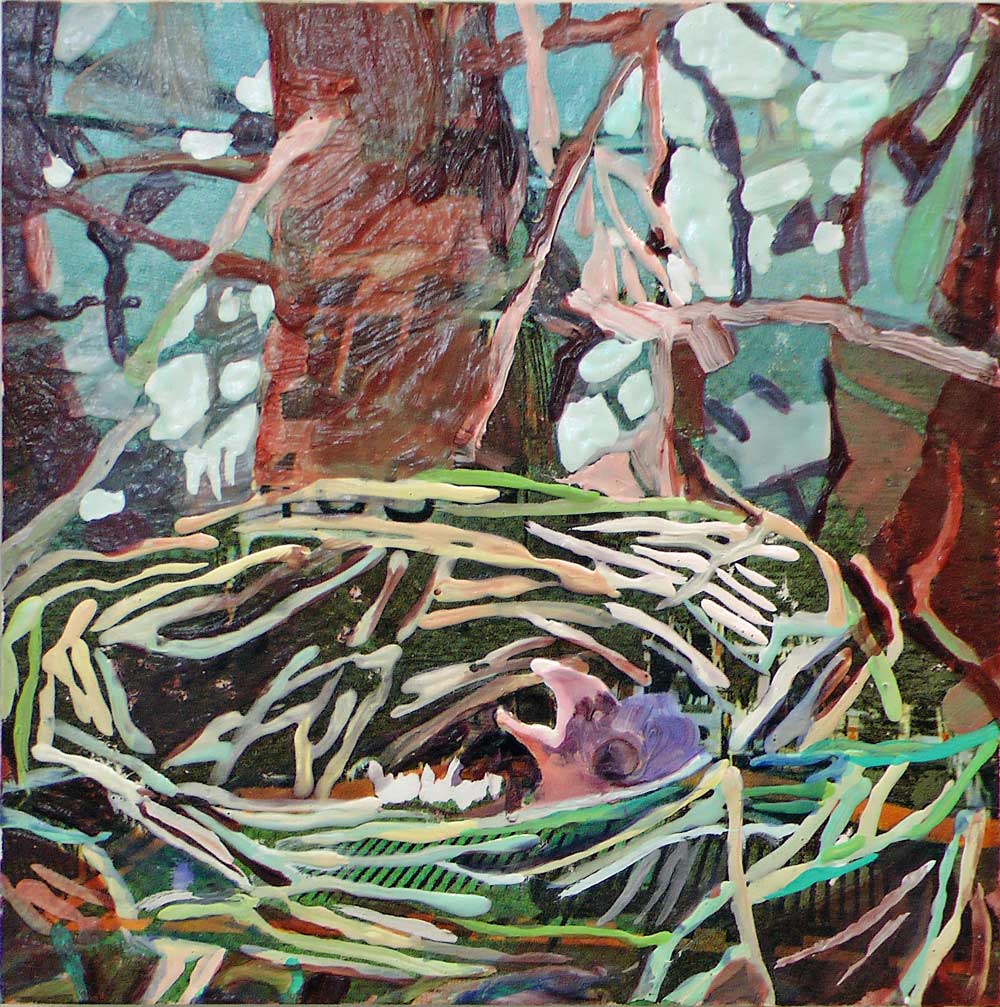






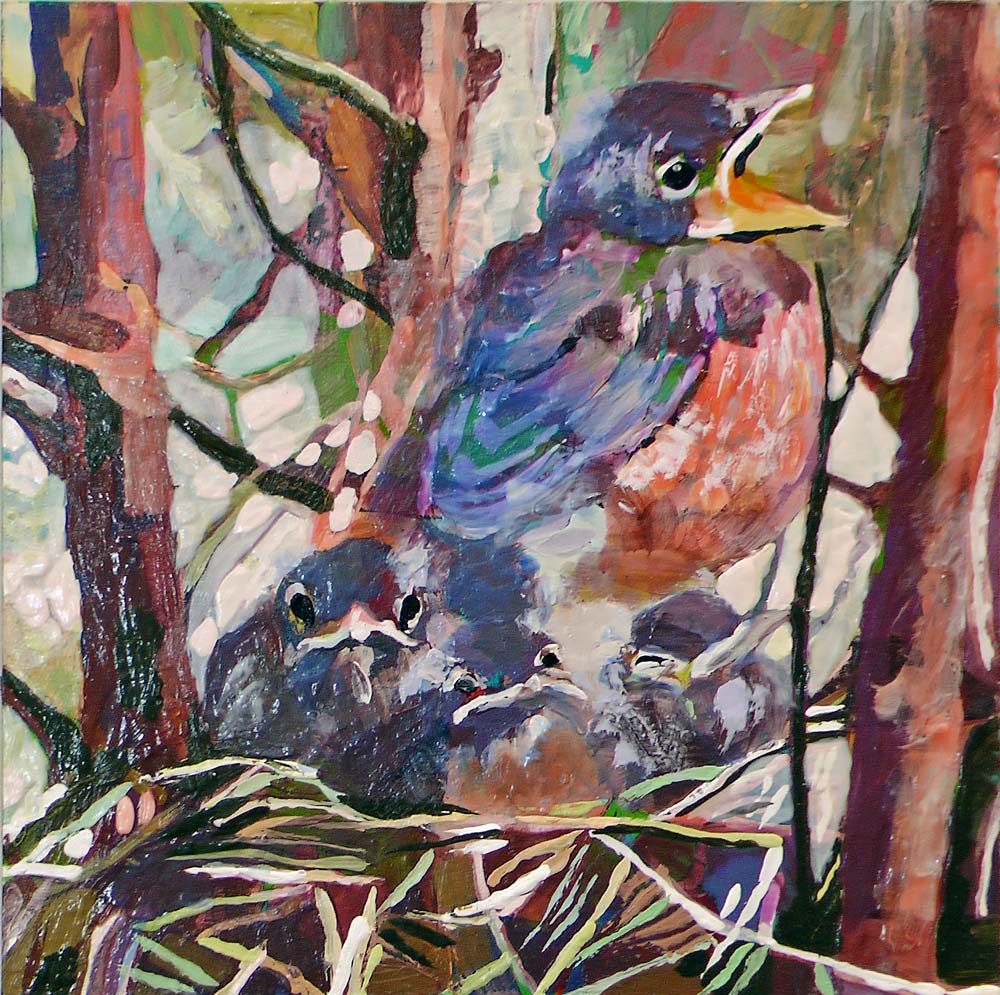









Landscape painting in Canada has frequently been dominated by work less rooted in human geography; exploring the wilderness and generally downplaying the human reconstruction of the western prairies. John Prine was whispering in my ear as I started the dashcam series, placing the roadway firmly in the center of these artworks. Casting the viewer as the main character in a journey through the landscape altered by but not contained by human intervention. The works vary in size, exploring how shifting scale contributes to the visual impact. All the works feature acrylic paint layered on panel.
The series uses multiple layers of paint, often combined with carving and sanding, reworking the surface, literally reconstructing the landscape. I hope that this process of building up the surface of the artwork translates into how people experience the paintings, as the layers and shifts in the surface texture slowly are revealed over a longer period of contemplation. As the work progressed, I started to remove certain elements concentrating on placing the carefully delineated structure of the roads and signage in contrast with the loose dense painting of the landscape. Emulating some of the inherent contradictions in human interaction with our environment.
I strive for these works to be emotive paintings, rooted in physical journey but trying to build on the poetic nature of simple life experience. Geography as metaphor, with the acknowledged influence of the many writers, musicians and artists who have explored the rich terrain of our passage through the landscape.
And then in the spring of 2020 journeys suddenly became infrequent, as we all grappled with the necessary changes created by the COVID 19 pandemic. As the weeks of reduced city traffic continued, I started to observe changes in my environment. Local wildlife started to openly dominate my surroundings, brazenly travelling the local roadways and freely carousing throughout the neighbourhood. I started to ponder the importance of animals as portents in classic stories, religion and literature. The result is a body of work entitled Neighbours.
This is a series of block-prints that feature the animal visitors that I observed from my studio. It is a playful attempt to cast the animals in the role of portents, the imagery is simple and generally open ended. The work was created in the context of our current situation of a world-wide pandemic and on-going environmental crisis. I believe that the animals provide a moment of hope and perhaps wisdom in their ready adaptation and celebration of freedom in the midst of human crisis. Their behavior, perhaps, showing us all a pathway forward.